Hanoi - 2007
I had a 4-week Indochina trip in May-June 2007.
(Melbourne – Bangkok – Thailand – Laos - Vietnam - Cambodia -Thailand – Bangkok - Melbourne)
On my IntrepidTravel tour we travelled to Hanoi after a night on a boat at Halong Bay .
Originally a small settlement along the banks of the Red River, the city was founded as Thăng Long,
the capital of Imperial Vietnam, in 1010 by monarch Lý Thái Tổ.
Thăng Long would remain the most important political and cultural centre of Vietnam until 1802, when the Nguyễn dynasty,
the last imperial dynasty of Vietnam, moved the capital to Huế.
Thăng Long was renamed to Hanoi in 1831.
In 1873, Hanoi was conquered by the French, and from 1883 to 1945, the city was the capital of French Indochina.
The French colonisation left a lasting impact on the city's architecture that is visible today, as showcased through
the juxtaposition of French-styled avenues, bridges, buildings, and traditional Vietnamese architecture.
From 1940 to 1945, Hanoi was occupied by the Japanese forces.
In 1946, the National Assembly of the Democratic Republic of Vietnam (North Vietnam) designated Hanoi as the capital
of the newly-independent country, which would last during the First Indochina War (1946–1954) and the Vietnam War (1955–1975).
Following the end of the Vietnam War in 1975, Hanoi has been the capital of a reunified Vietnam since 1976.
On the way into Hanoi we stopped off at a ceramics factory where they were making vases and other pottery items.
Also there were girls embroiding Vietnamese scenes. Girls were painting very precisely on vases and dishes.
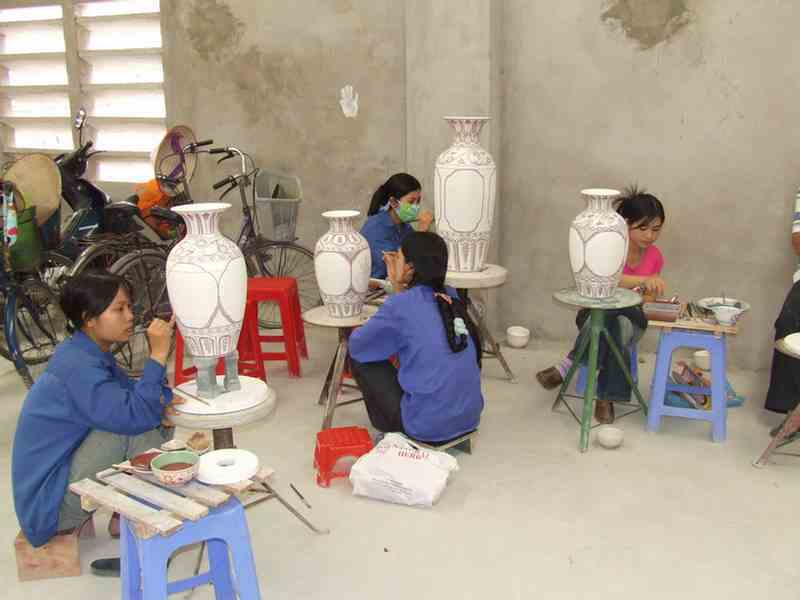
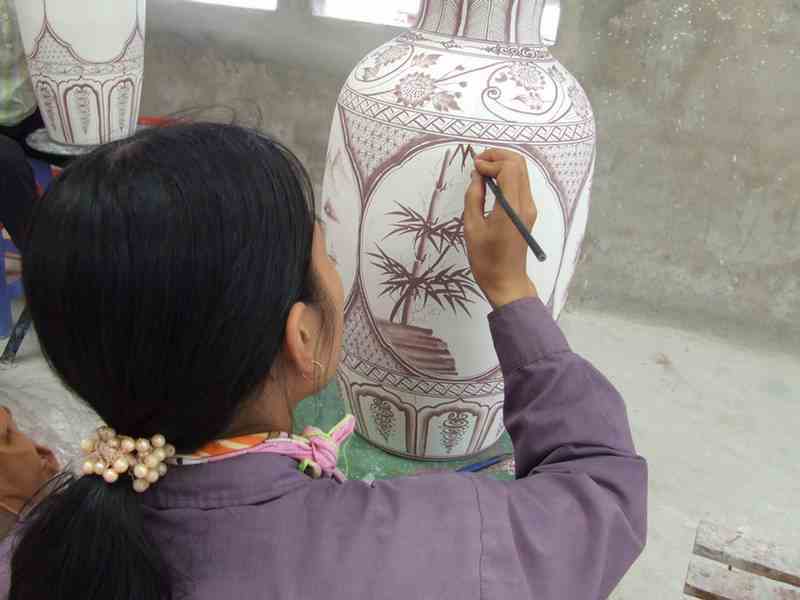
Street scenes in Hanoi.
To cross the road you just keep on walking. The motorcycles just veer around you.
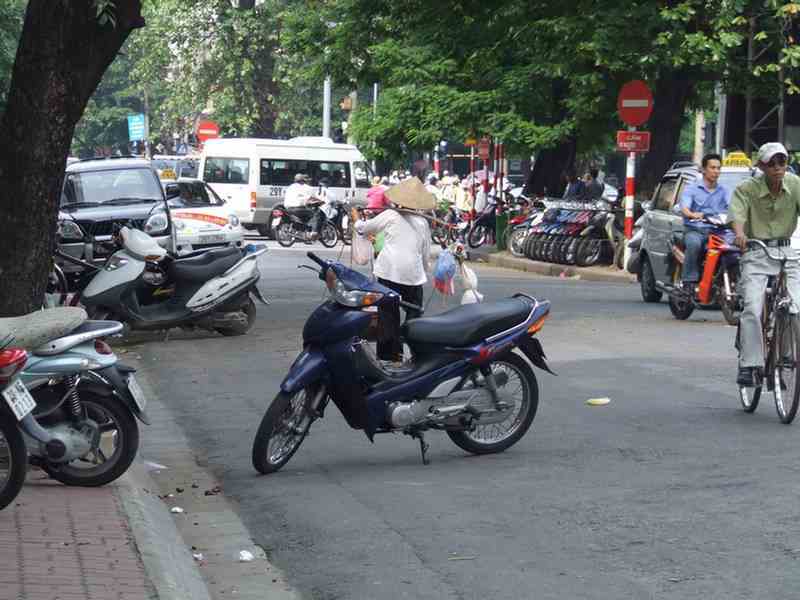
Motocycles bank up in rows at traffic lights, just like cars in Australian cities.
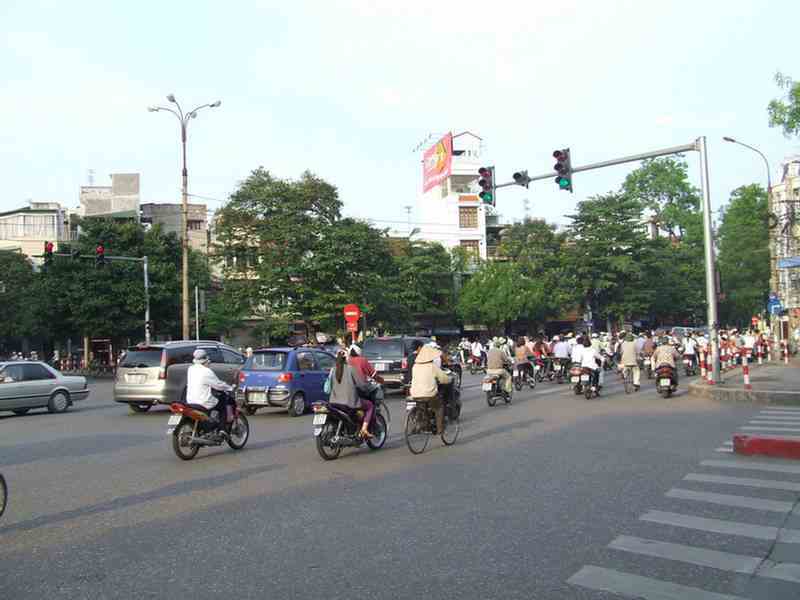
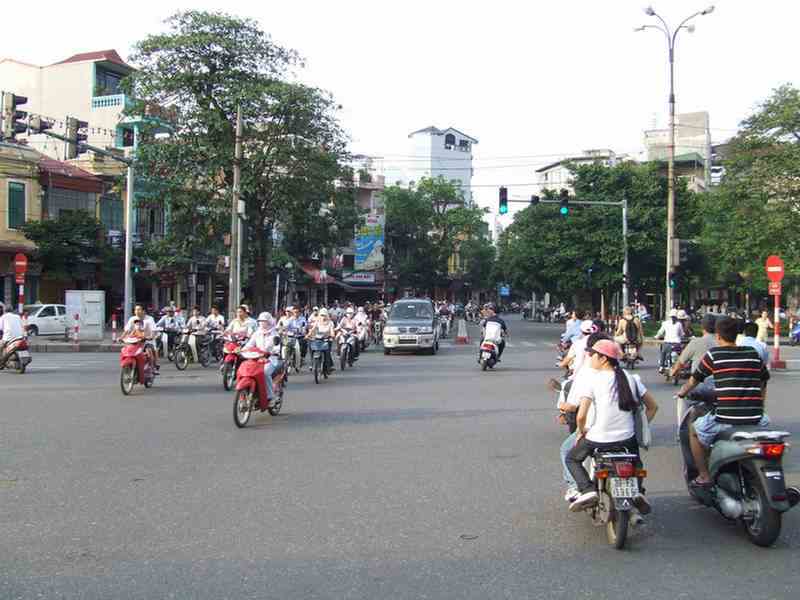
Riding in a cyclo. You sit in front of the rider here. (In China in a rickshaw, you sit behind the rider.)
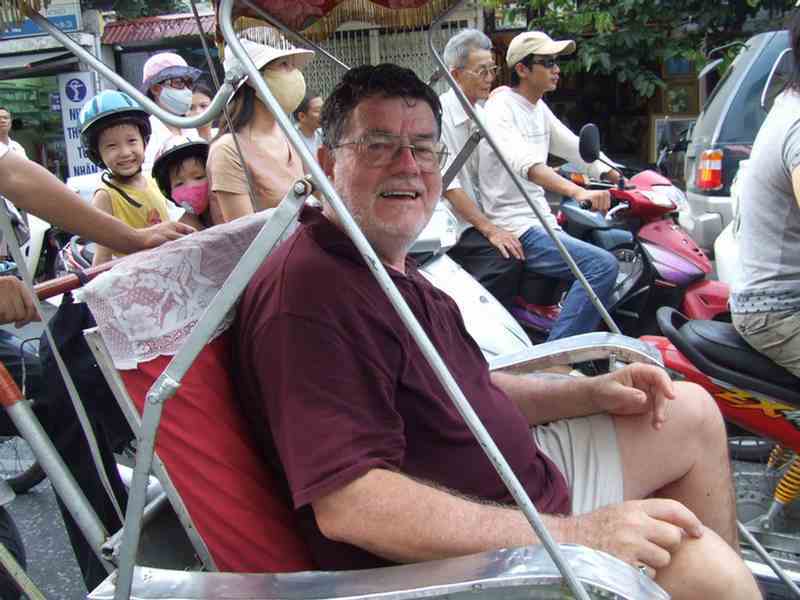
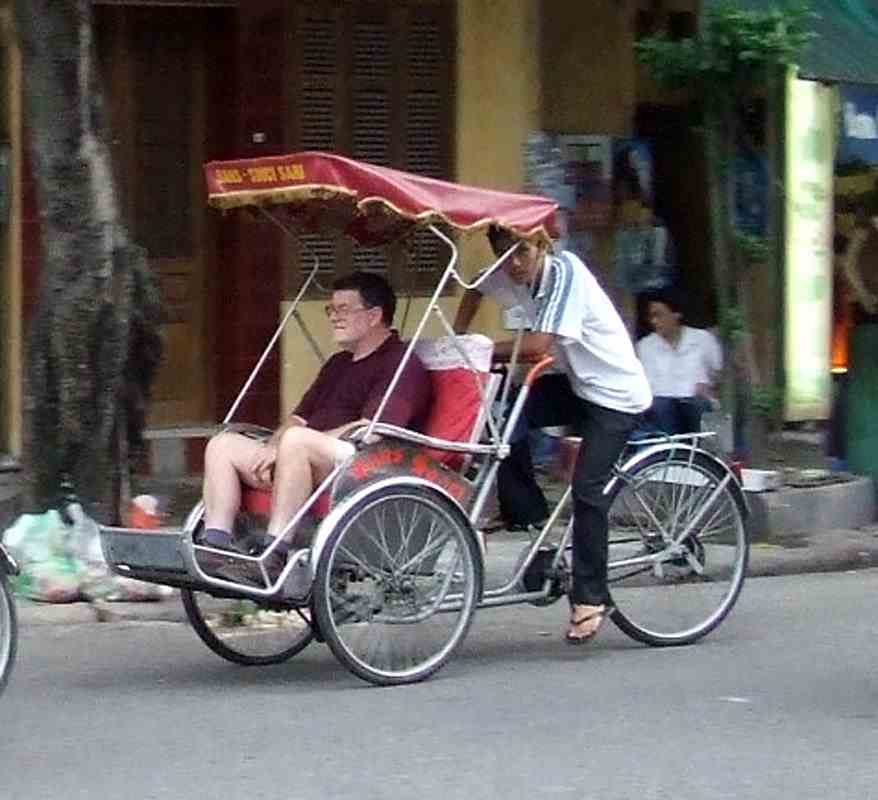
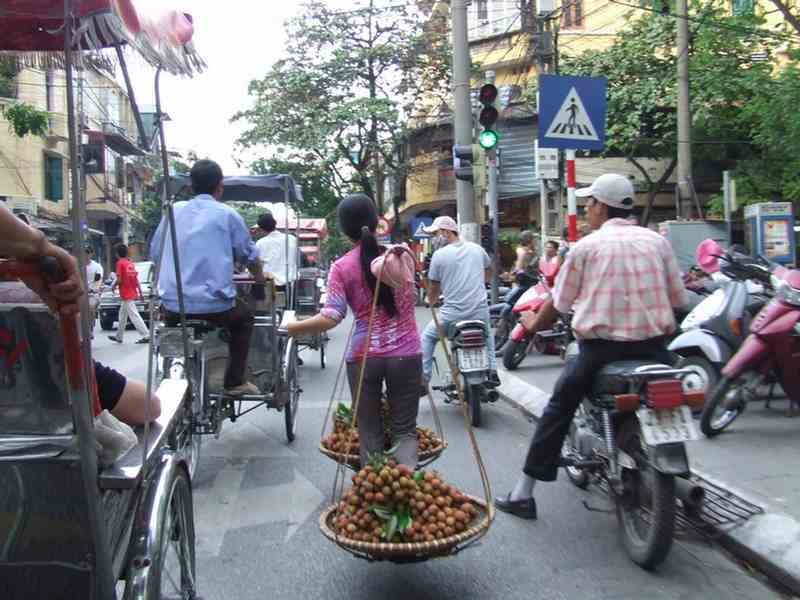
The Water Puppet Theatre
We saw a good, funny show. Puppeteers standing in the water behind screens used long rods and strings to work the puppets.
The most common subject matter usually refer to events occurring in the countryside and reflect the concerns and wishes
of farmers, who are dependent on the harvest and weather.
The scenes of this type of theatre represent rural life, rice fields, buffalo plowing the land, crops irrigation,
the rice harvest, or children jumping and playing, fish swimming, frogs, etc.
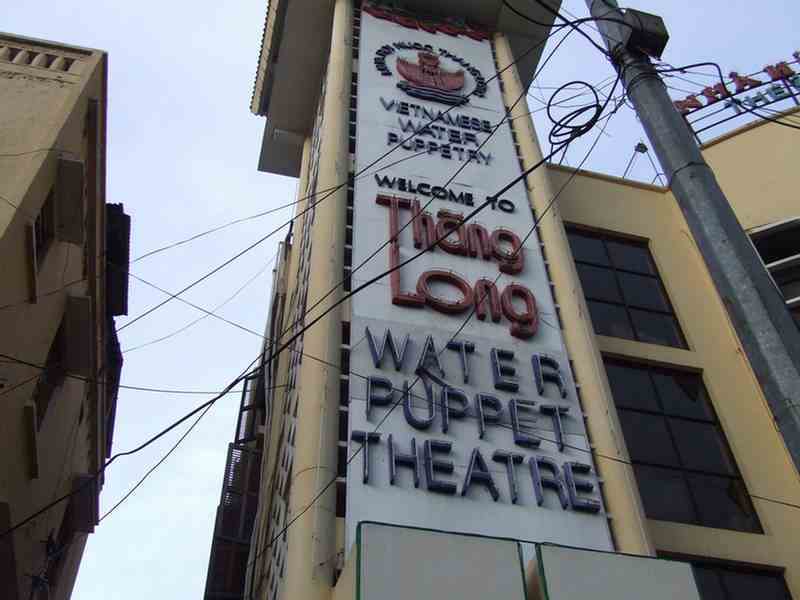
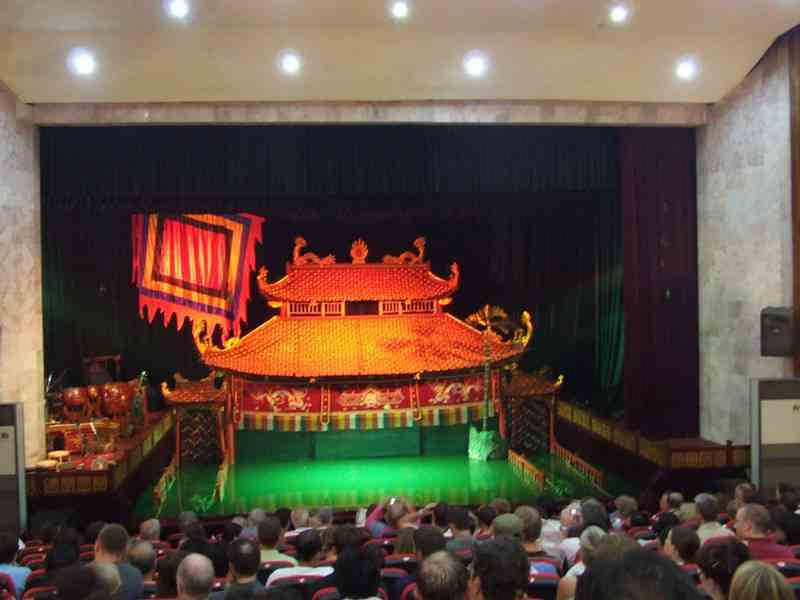
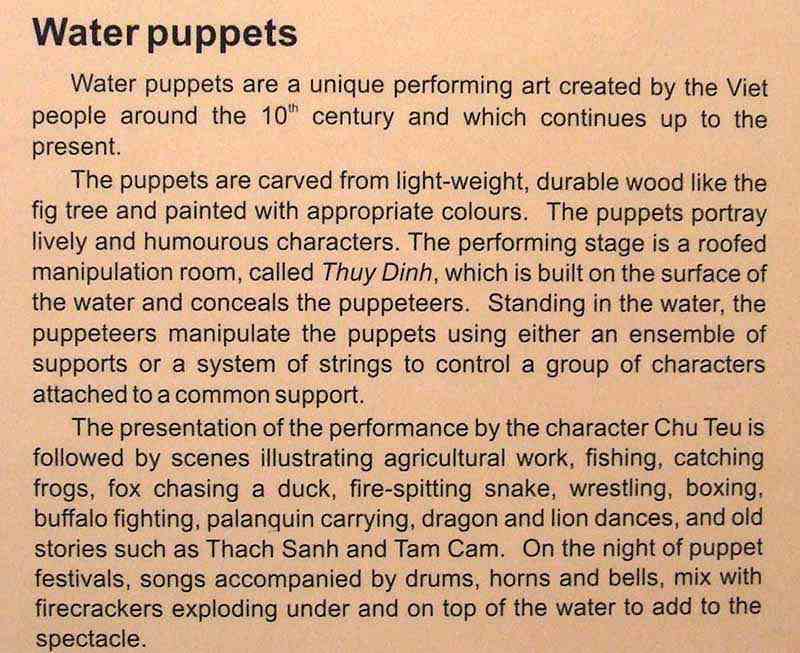
The musicians at the side played lively music and harmony.
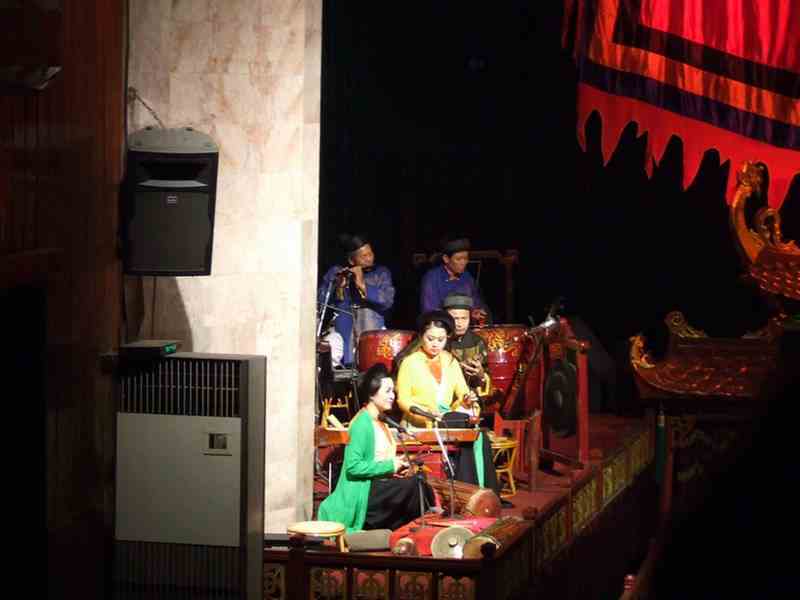
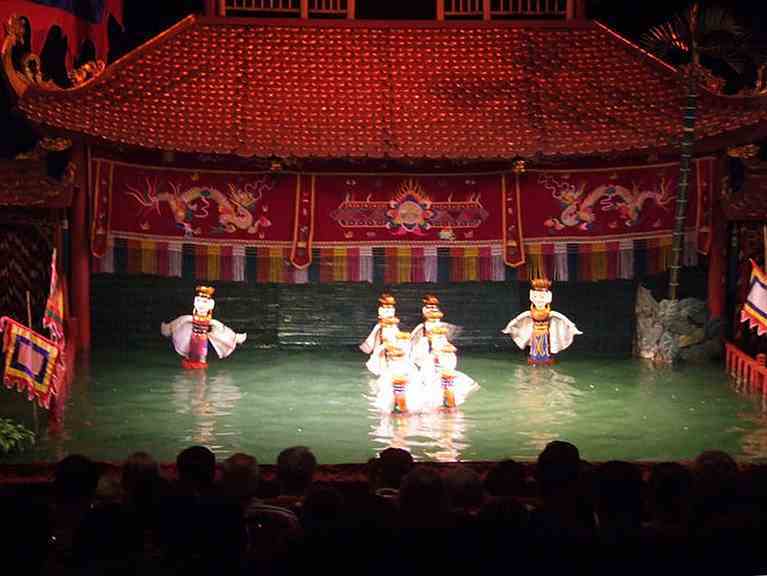
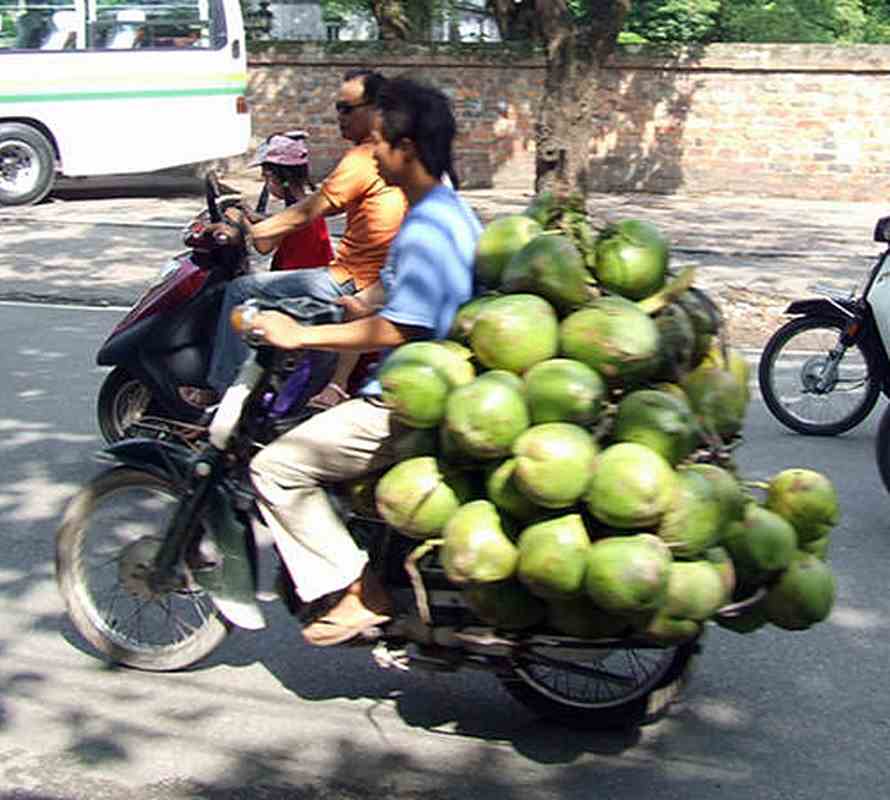
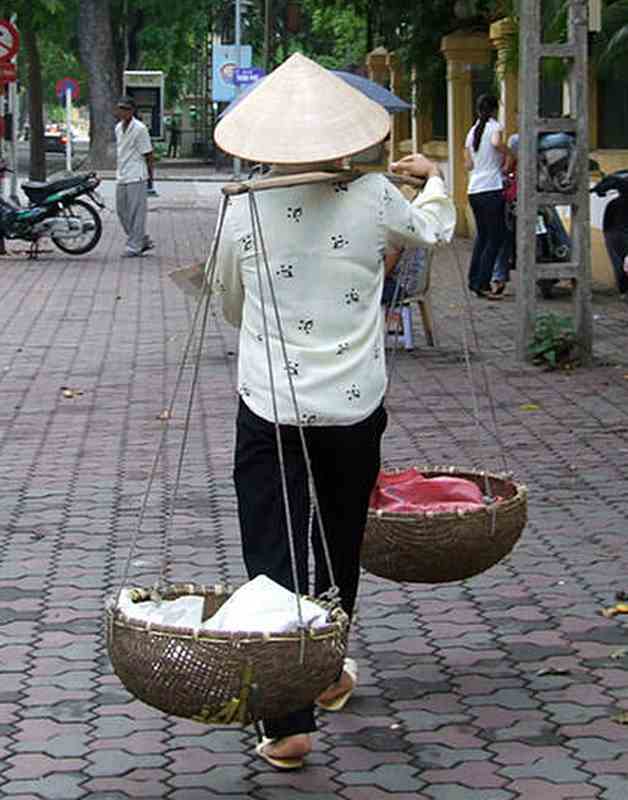
Hao Lo Prison - Hanoi Hilton
The Hoa Lo Prison (Vietnamese: Hỏa Lò, commonly translated as "fiery furnace", actually means "stove".
The name originated from the street name "phố Hỏa Lò" due to the concentration of stores selling wood stoves and
coal-fire stoves along the street from pre-colonial time.
Built in 1896, it was a prison used by the French colonists in Vietnam for political prisoners and later
by North Vietnam for prisoners of war during the Vietnam War.
U.S. POWs endured conditions that were miserable,
and were fed food so bad that the prison was sarcastically nicknamed the "Hanoi Hilton."
There is now a Hilton Hotel in Hanoi, called the Hilton Hanoi Opera Hotel, which opened in 1999.
It was built decades after the Vietnam War was over, but Hilton carefully avoided reusing the dreaded name Hanoi Hilton.
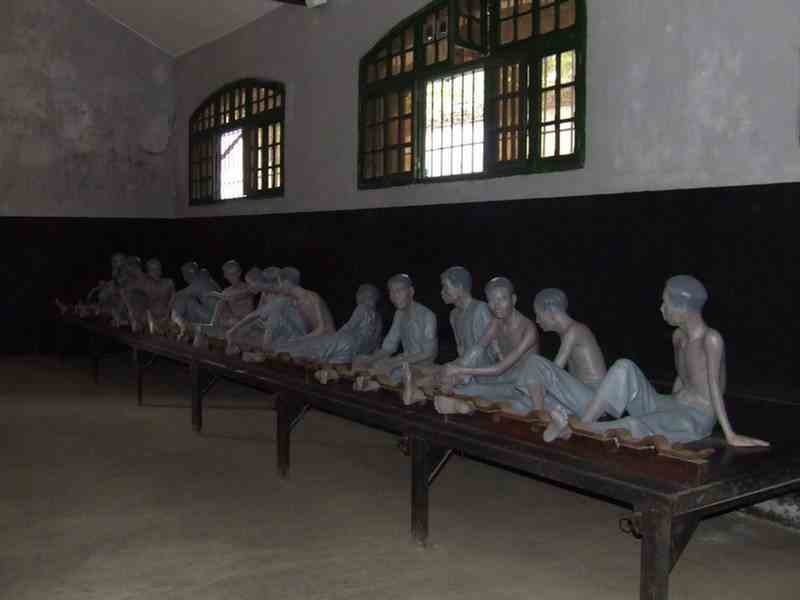
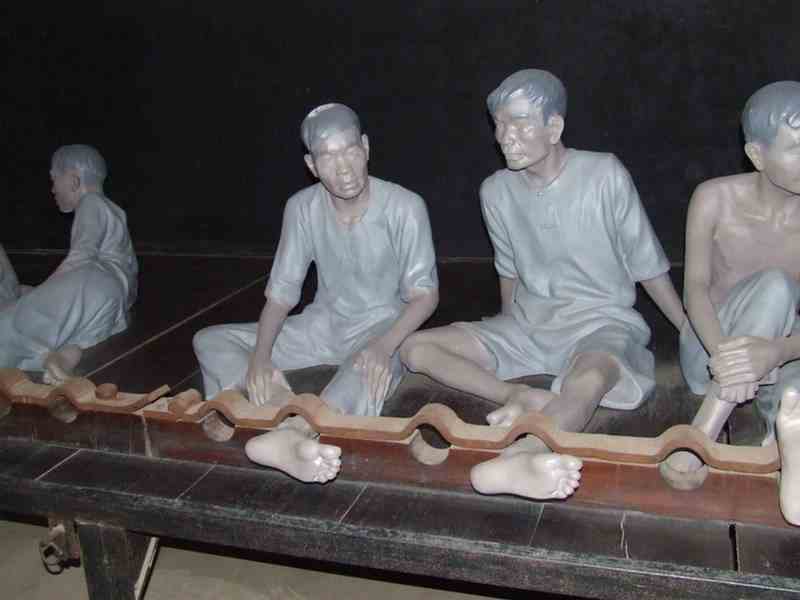
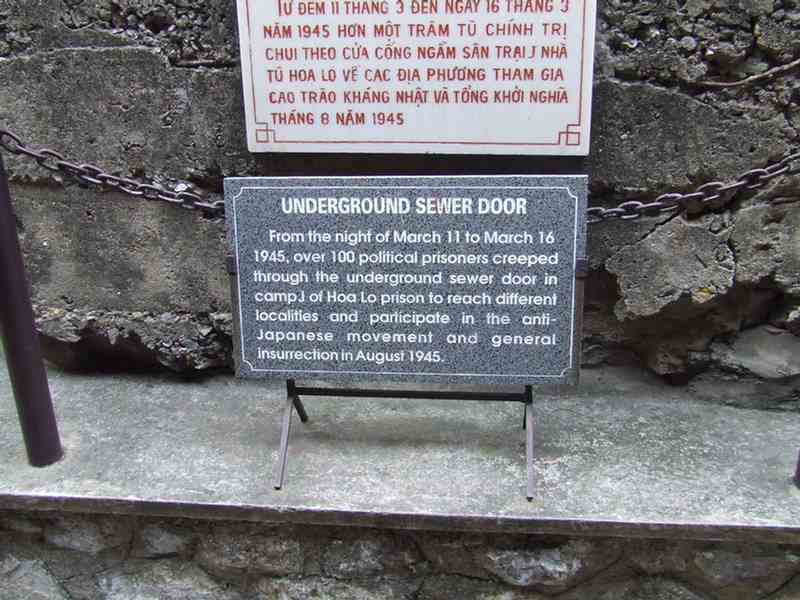
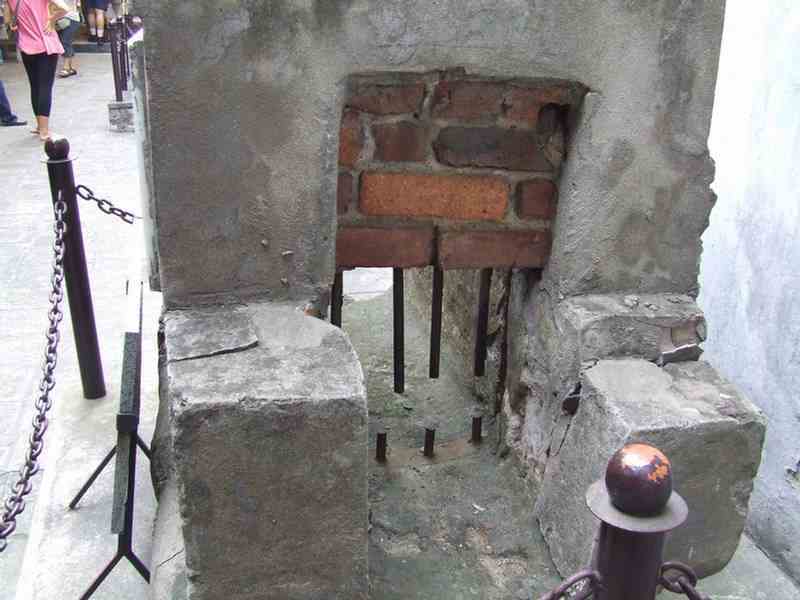

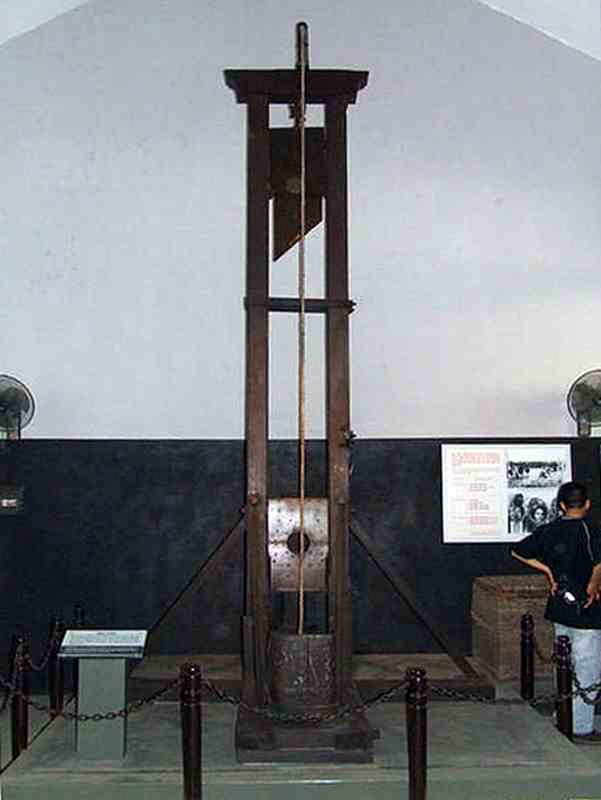
Ho Chi Minh's Mausoleum
We walked with our local guide, Quan, to Uncle Ho's Mausoleum.
The entry queue moved well. They even had a covered way to queue under.
He was better displayed than Mao in Beijing.
A queue marshall
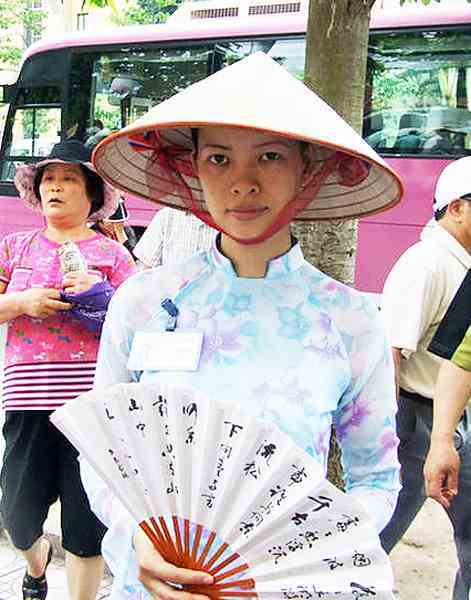
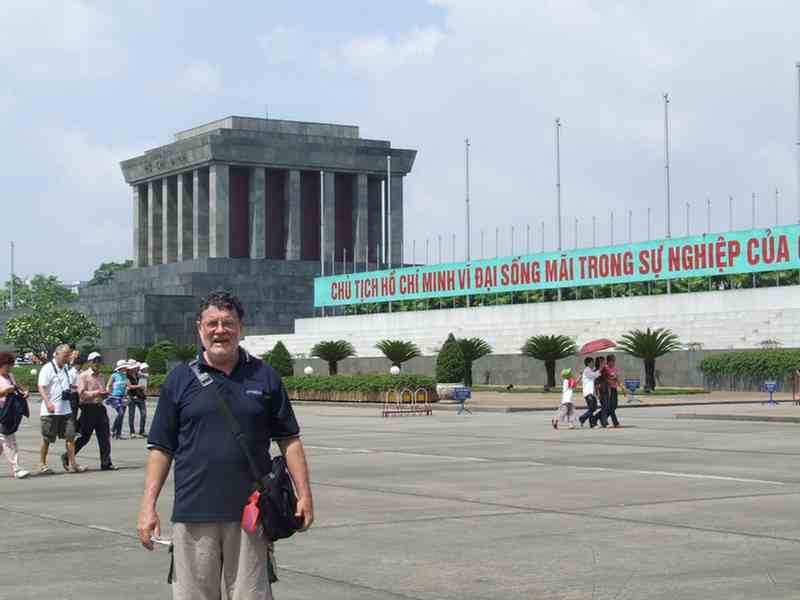
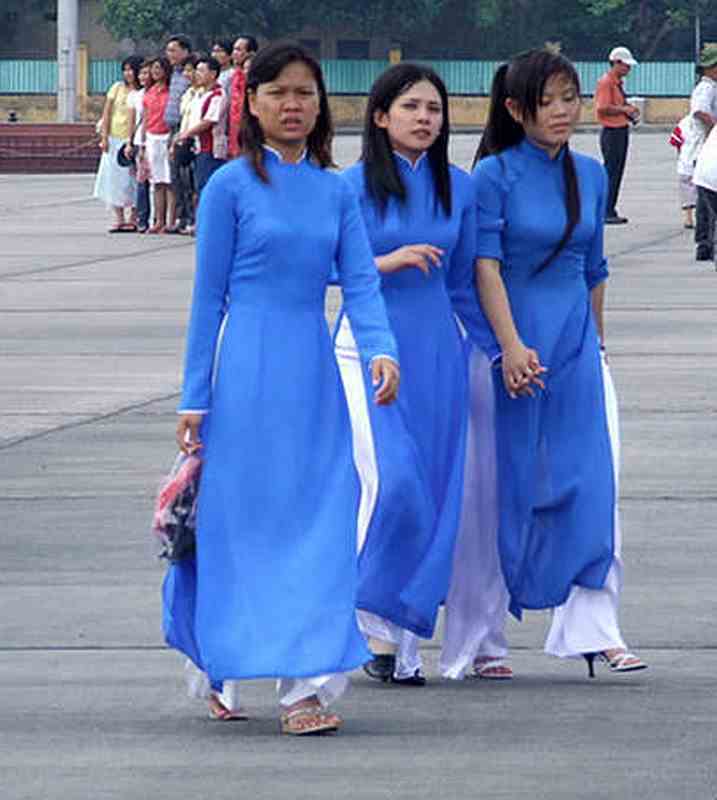
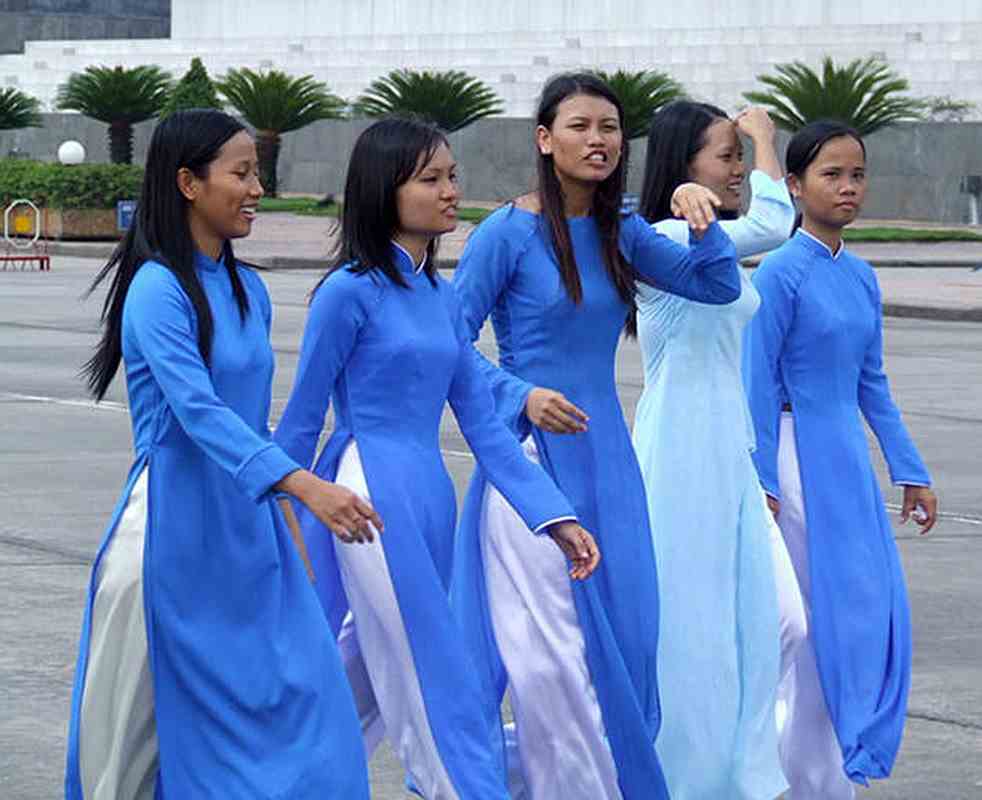
Ho Chi Minh's House
Adjacent to his mausoleum is the Presidential Palace.
It was formerly the French Indochina General Governor's Palace.
Ho Chi Minh never lived in it, preferring a simpler house.
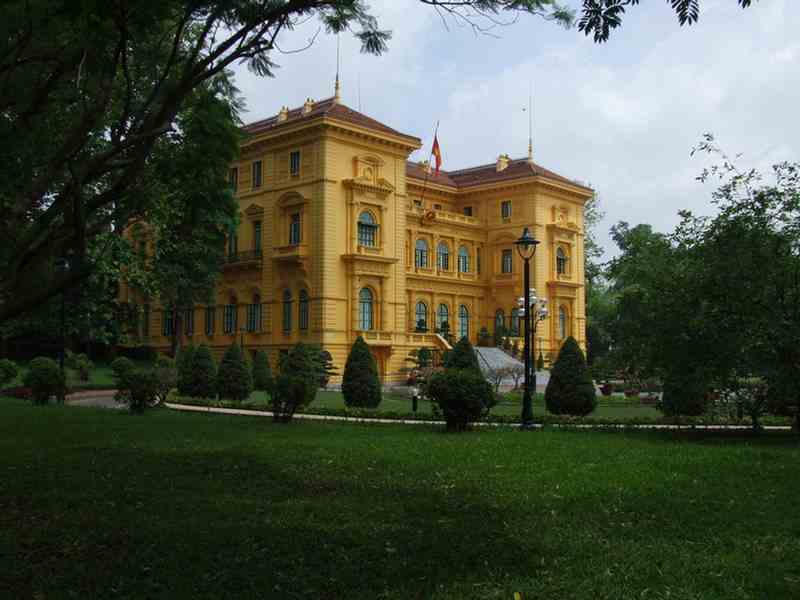
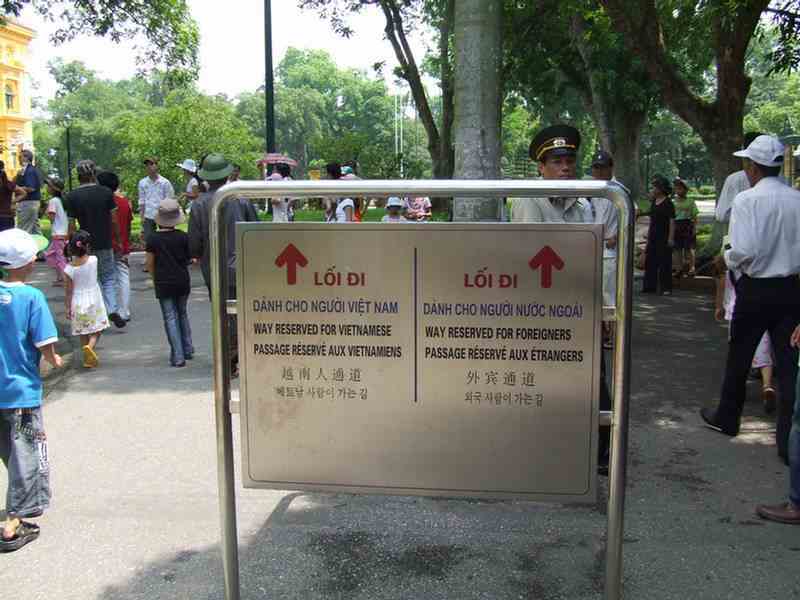
The simpler house where Ho Chi Minh lived and worked from 1954-1958.
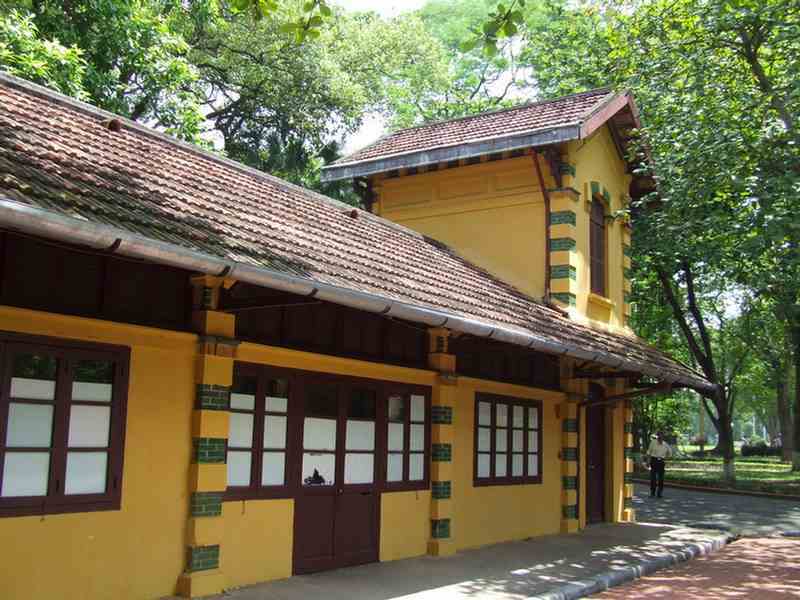
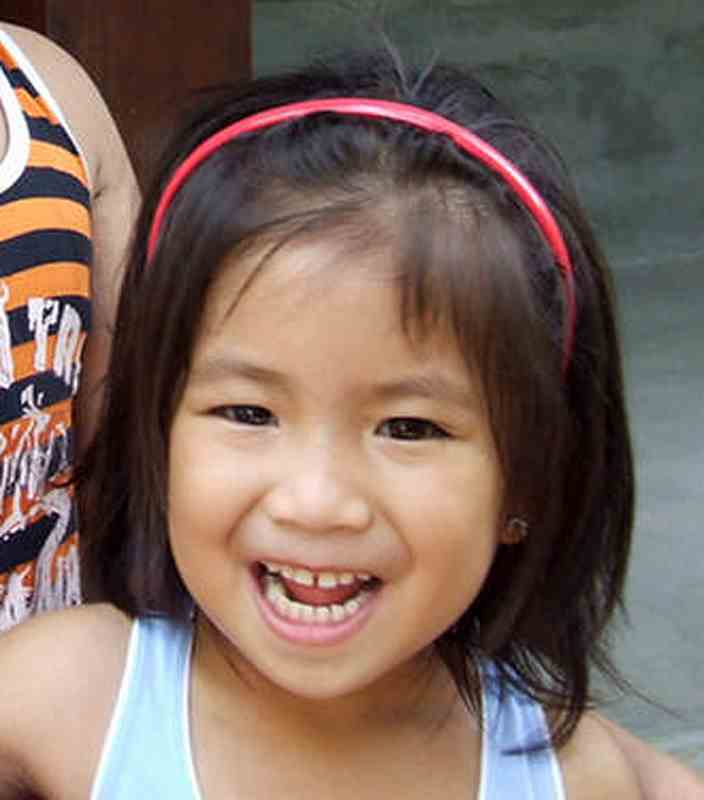
Ho Chi Minh Museum
The Ho Chi Minh Museum is near his mausolem. The whole building evokes a stylized lotus flower.
There is an excellent display of his youth, his knowledge and idea-seeking trips to France, Germany and Russia,
his struggles against the French, and the Vietnam War.

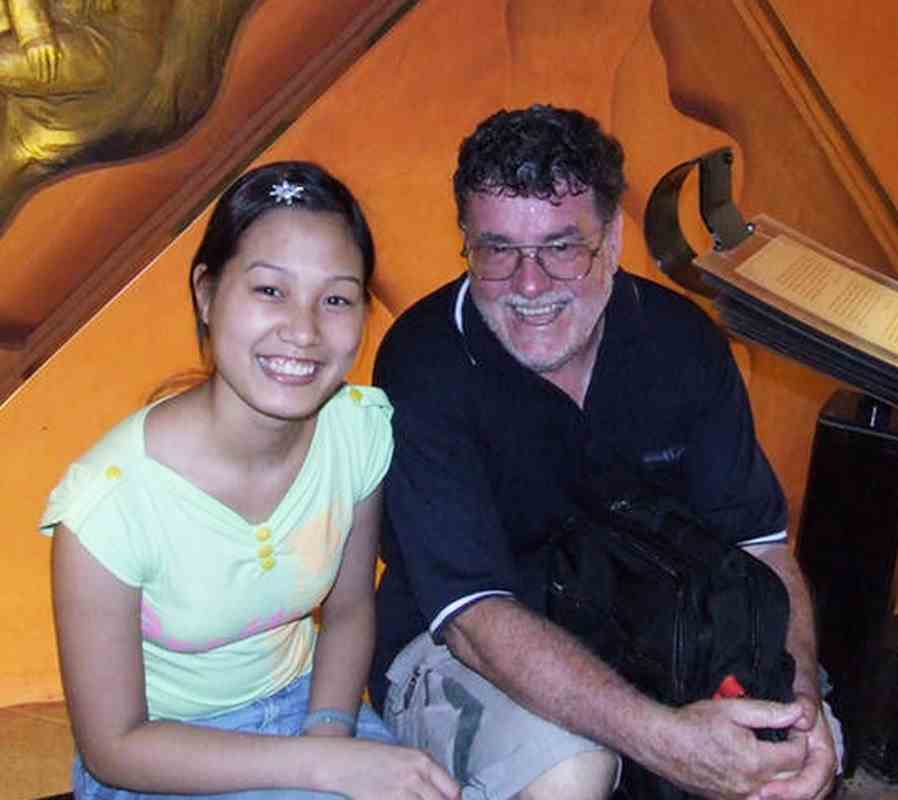
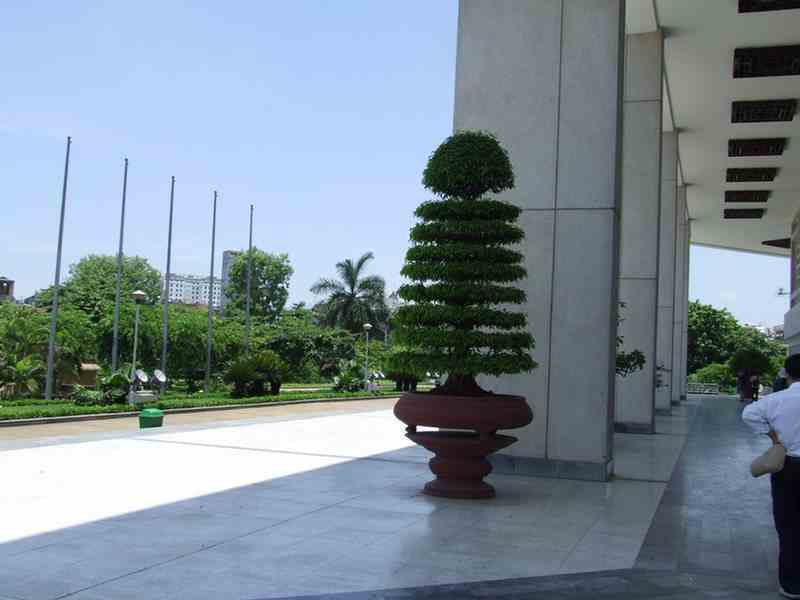
Museum of Ethnology
The museum conserves and exhibits the 54 ethnic groups of Vietnam like the Muong, Thai, Tay, Yao.
There was a display about food shortages after the Vietnam War.
Even the doctor kept pigs for food in his bathroom.
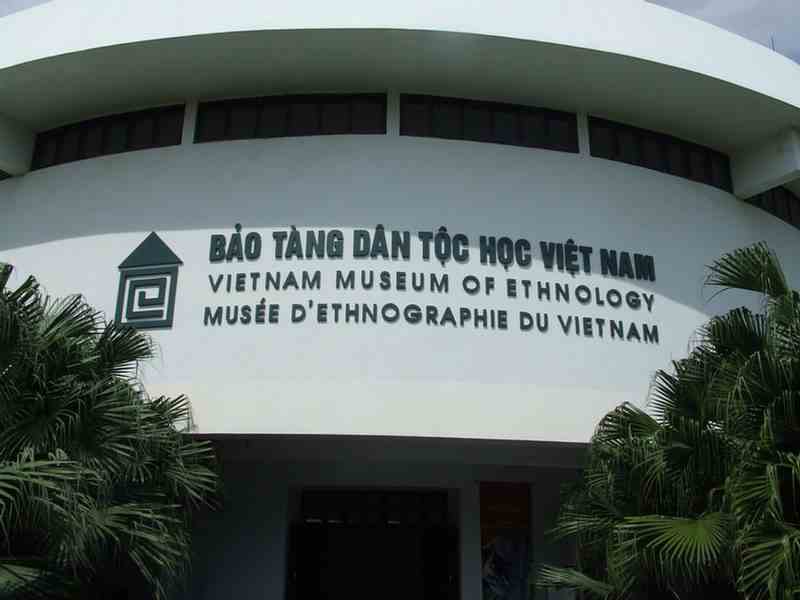
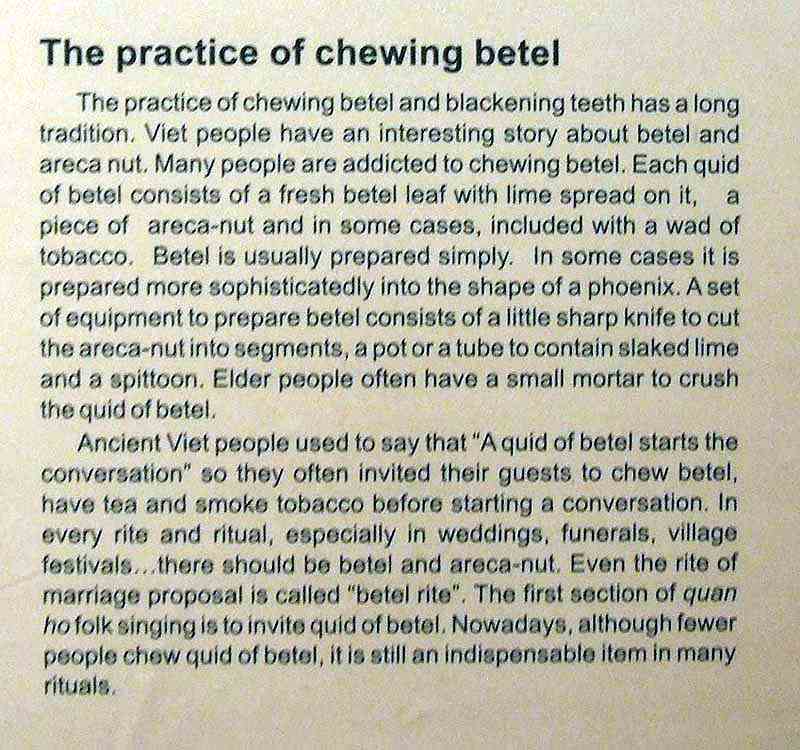
Outside there was an extensive display of village huts of the various Vietnamese tribes.
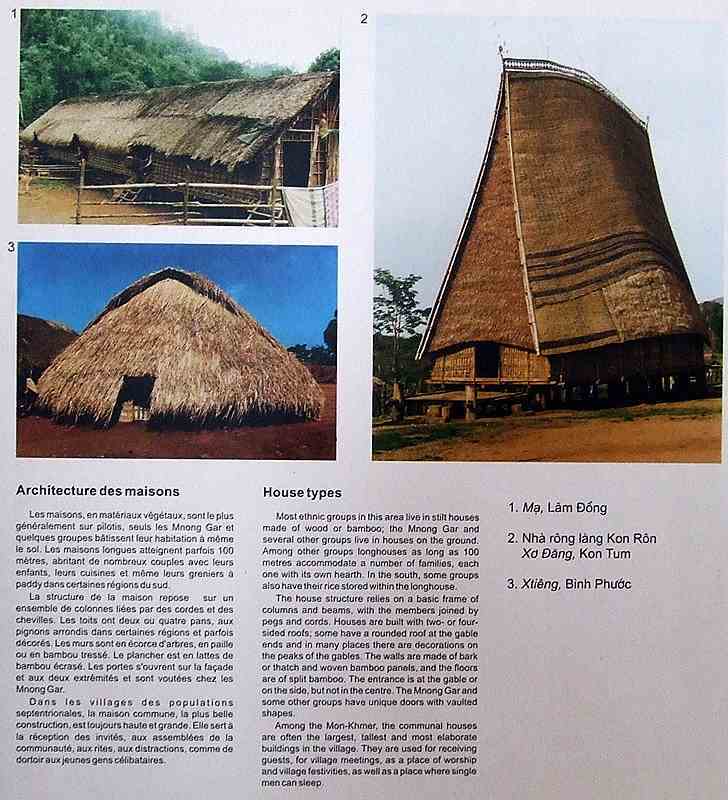
The most striking house is the 19m high Bahnar Communal House.
It was a wedge-shaped landmark.
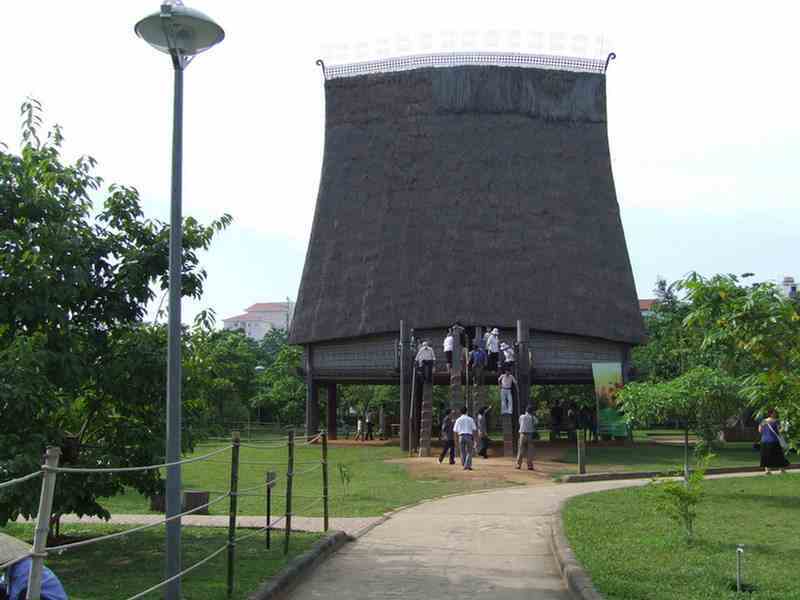
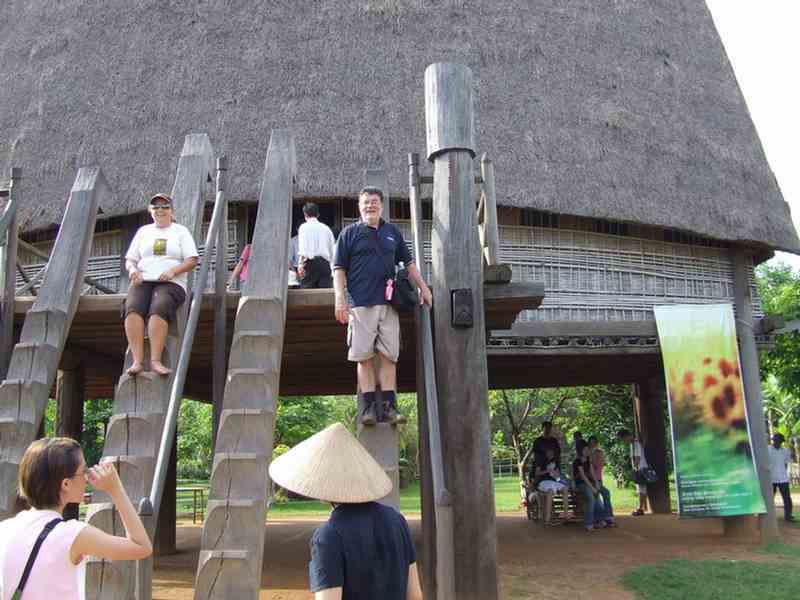
Another striking house was the Ede Longhouse.
Over 40m long it accommodated the families, daughters and granddaughters of an extended
matrilineral family in the Central Highlands.
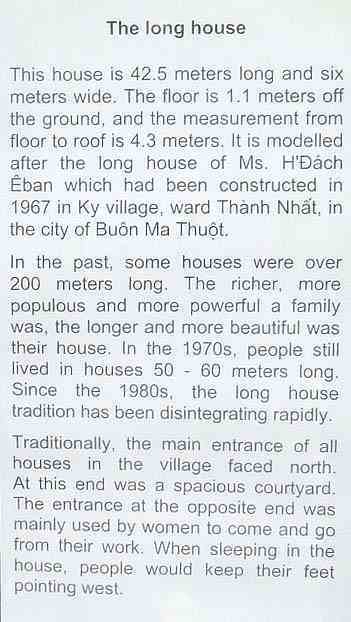
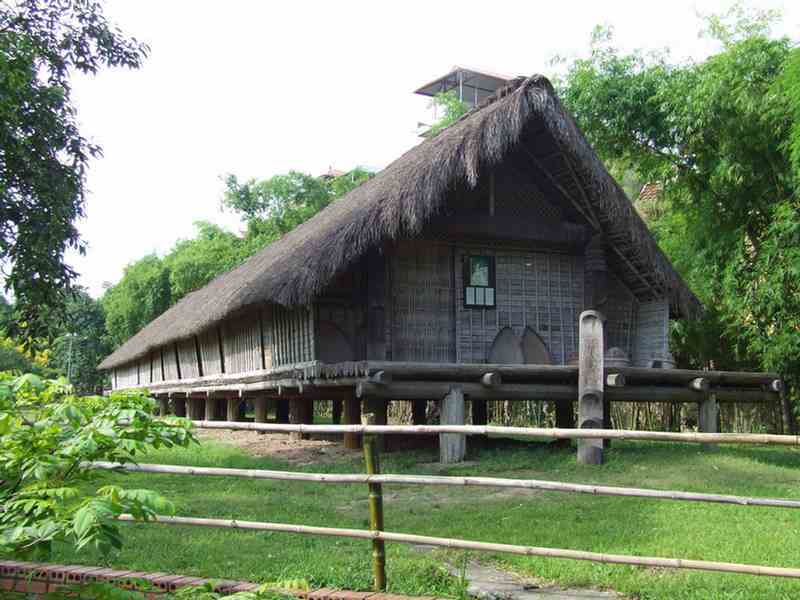
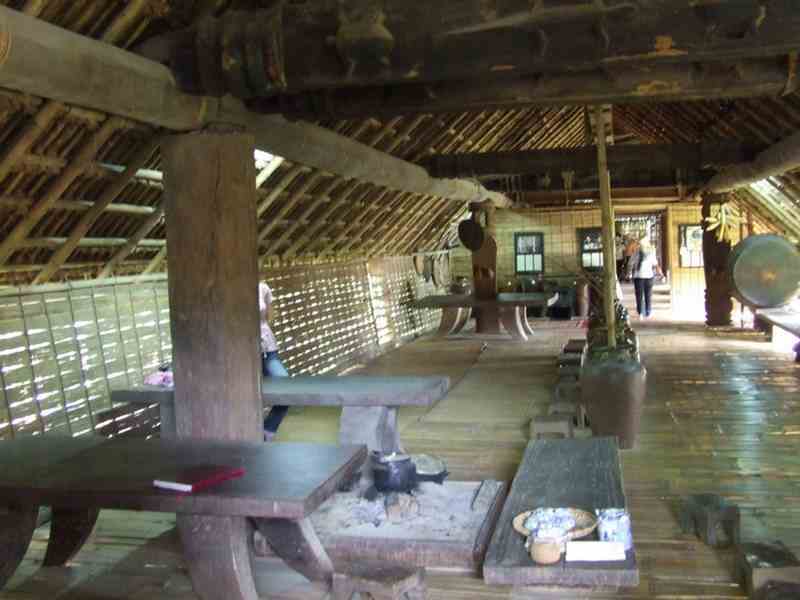
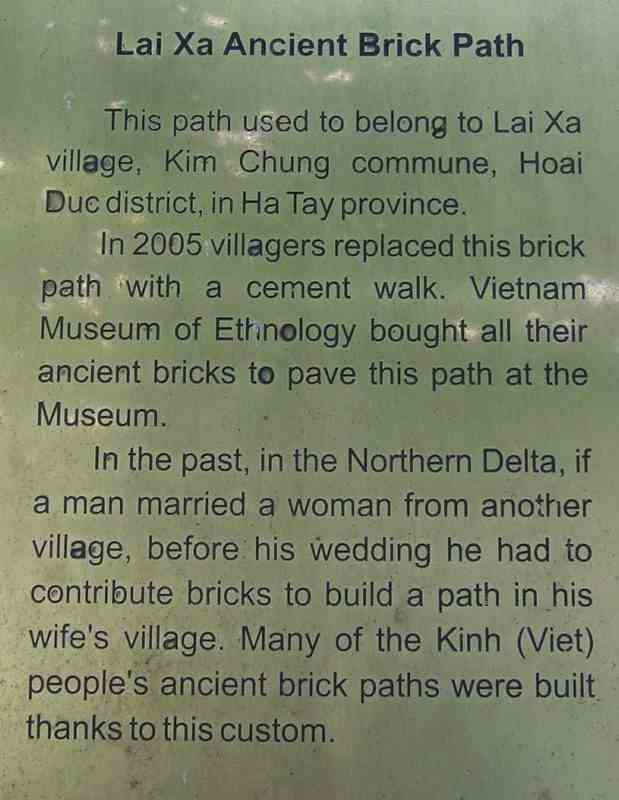
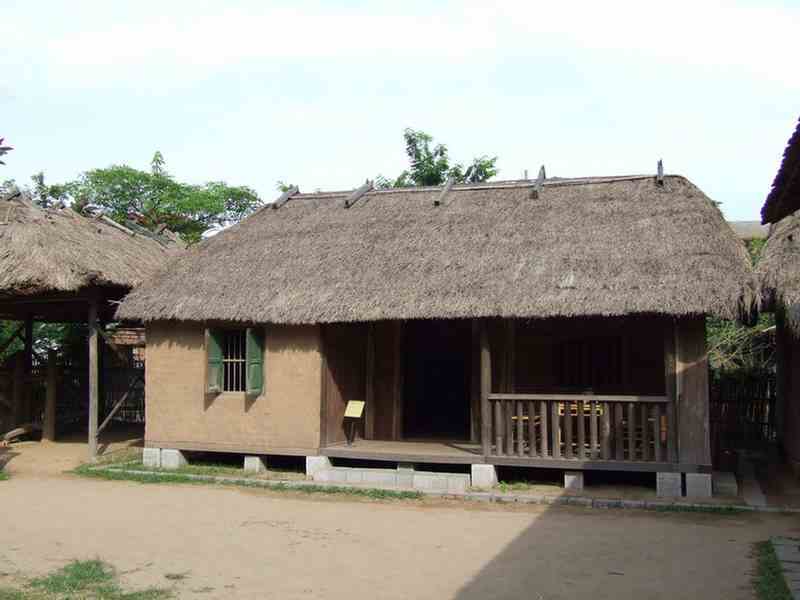
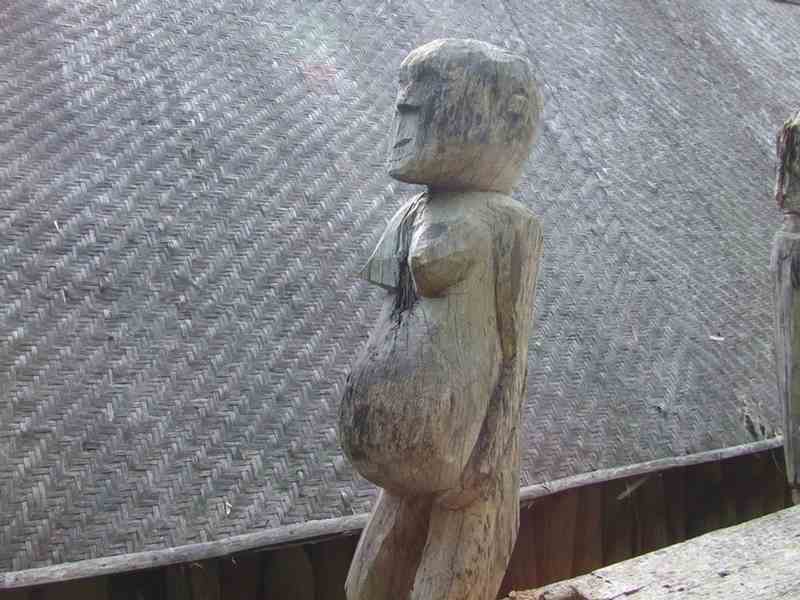

You can get your ears looked at on the street
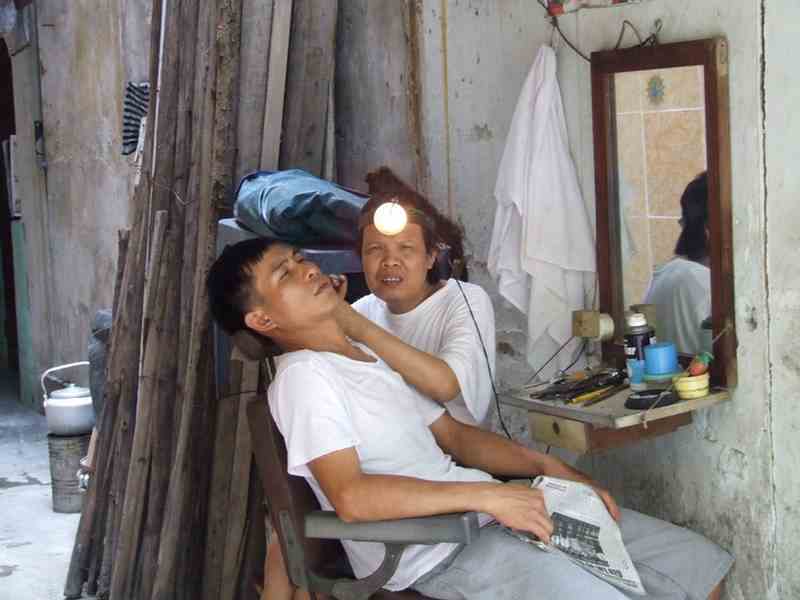
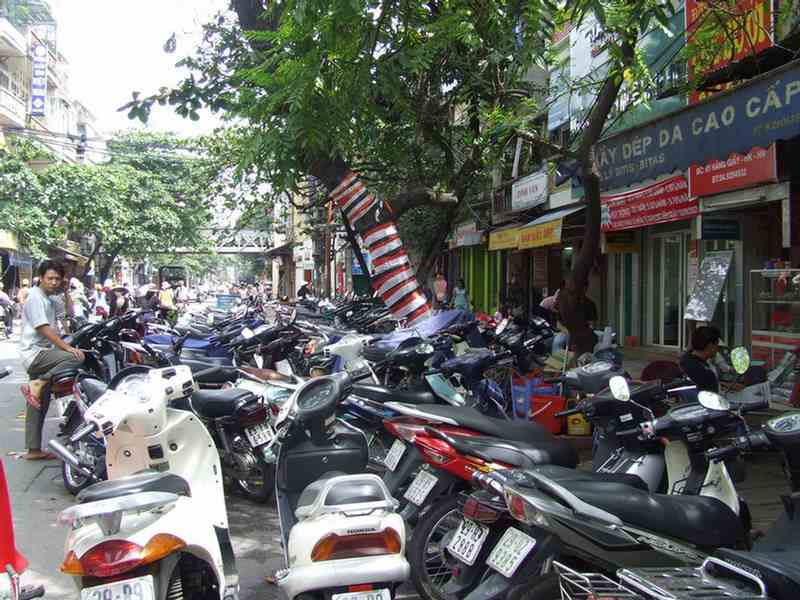
Y
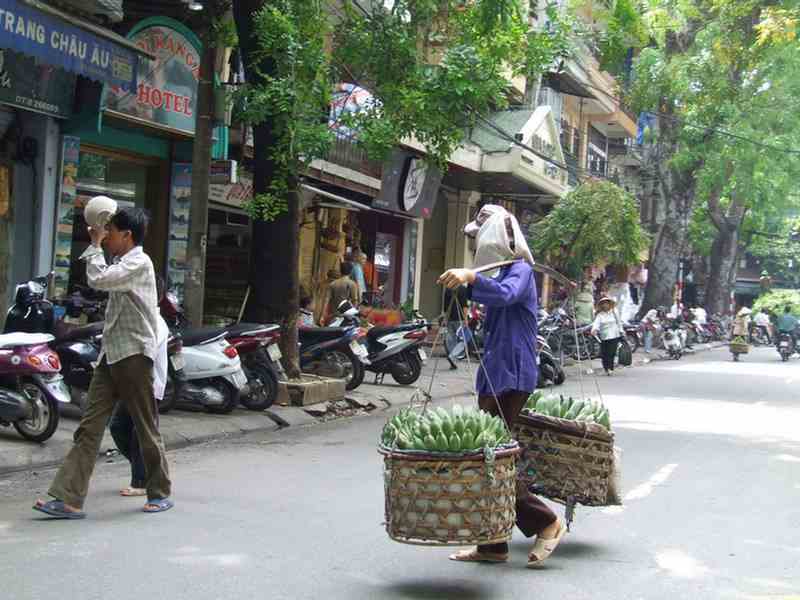 Y
Y
Y
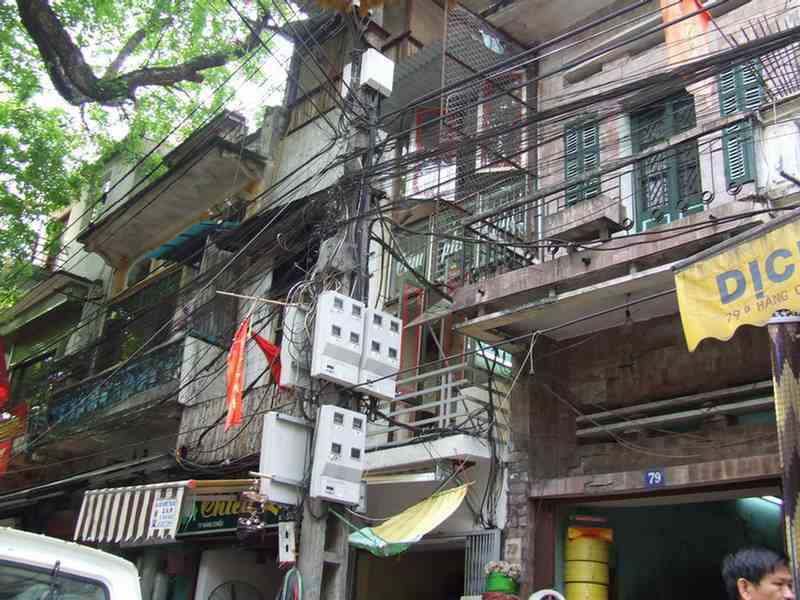
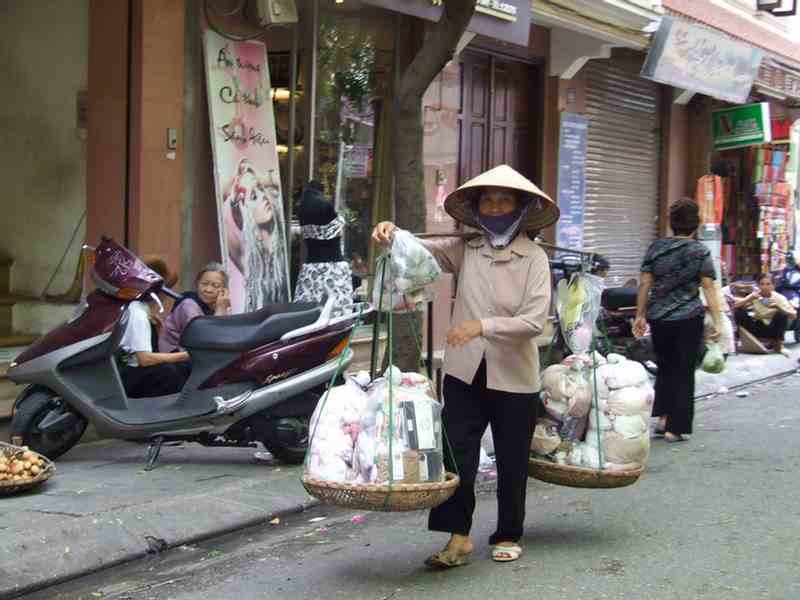
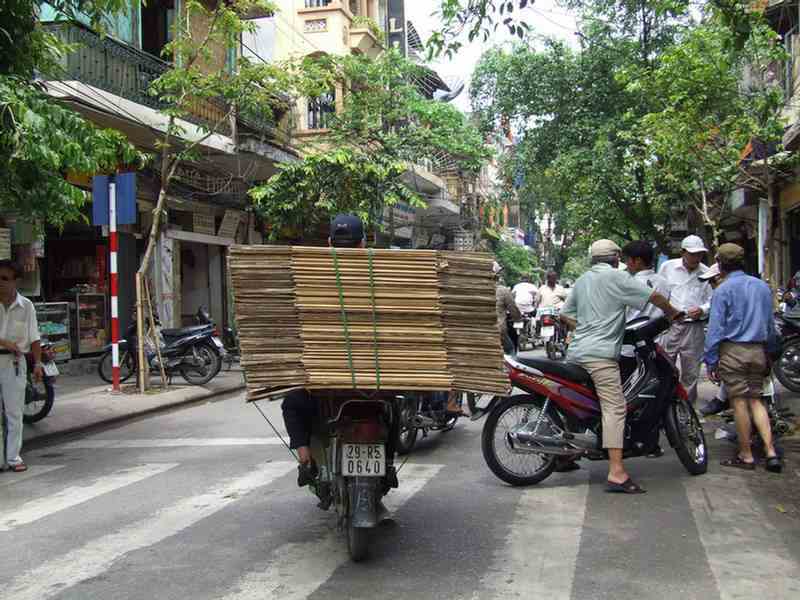
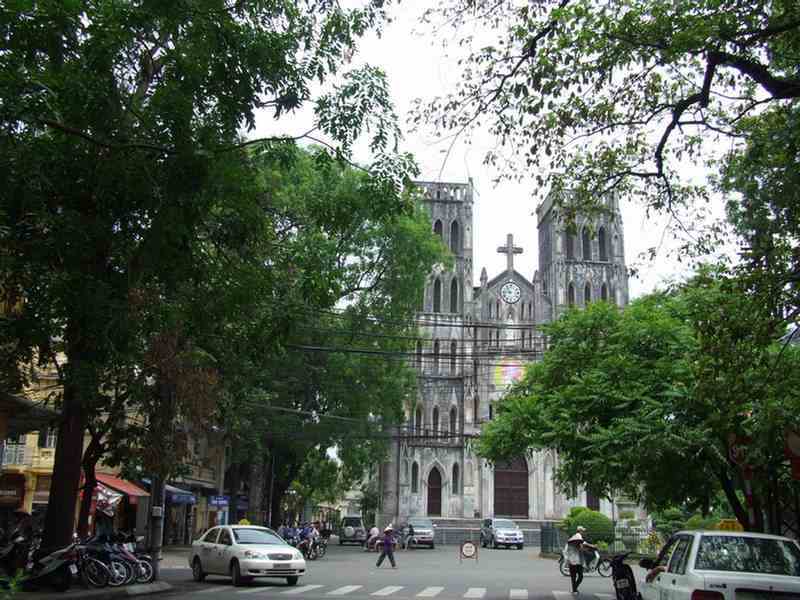

Hoan Kiem Lake (Vietnamese: Hồ Hoàn Kiếm, meaning "Lake of the Returned Sword" or "Lake of the Restored Sword"
is a lake in the historical center of Hanoi.
Legend has it that in the mid 15th Century, heaven gave Emperor Ly Thai To (Le Loi) a magical sword that he used
to drive the Chinese out of Vietnam.
One day after the war, while out boating he came upon a golden tortoise swimming on the surface of the water.
The creature grabbed the sword and disappeared into the depths of the lake.
Since that time the lake has been known as Hoan Kiem (Lake of the restored sword) because the tortoise returned the sword
to its divine owners.
Scenes in the Water Puppet Show depicted this.
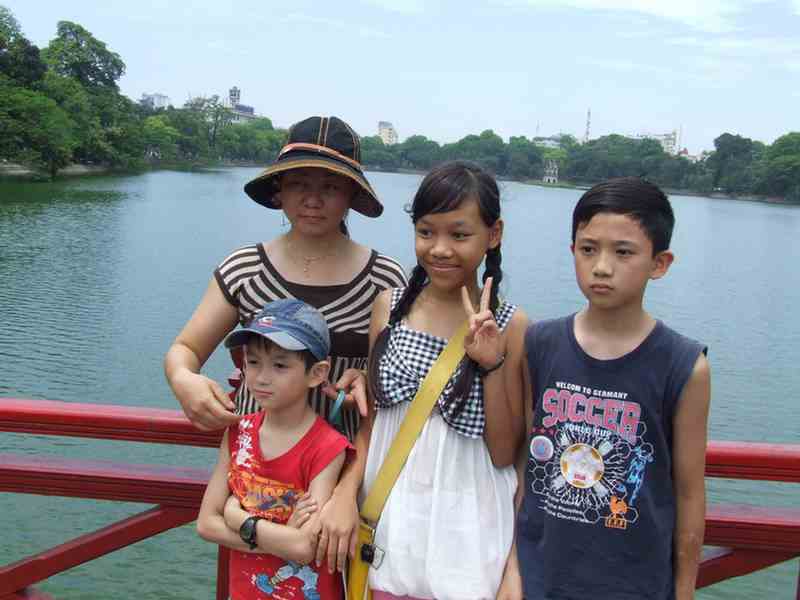
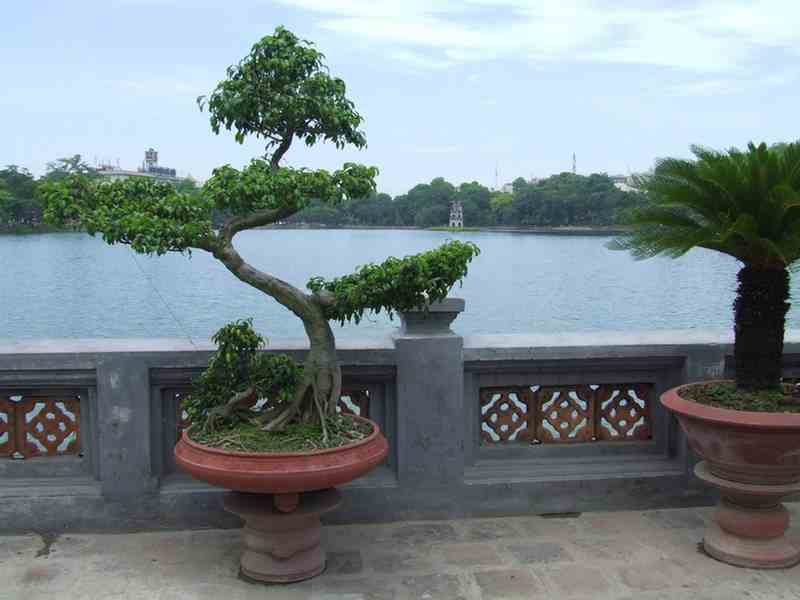
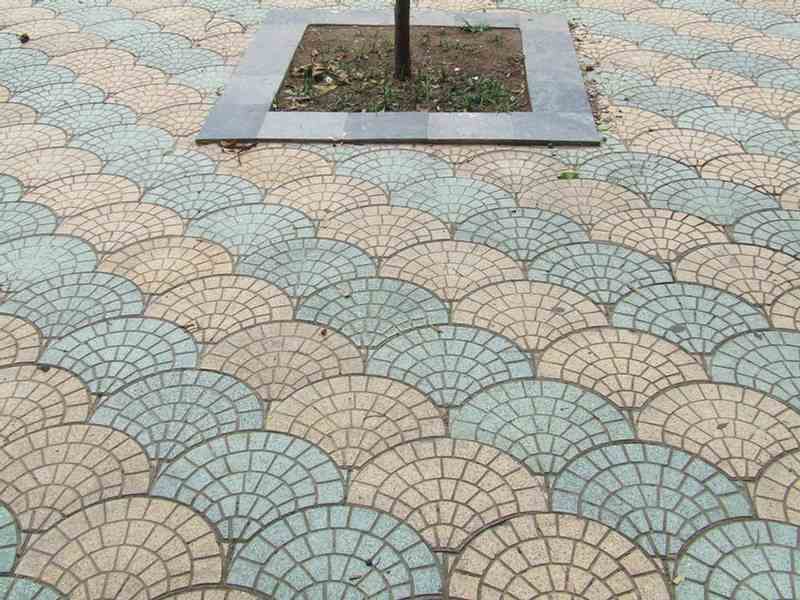
The ANZ Bank is here
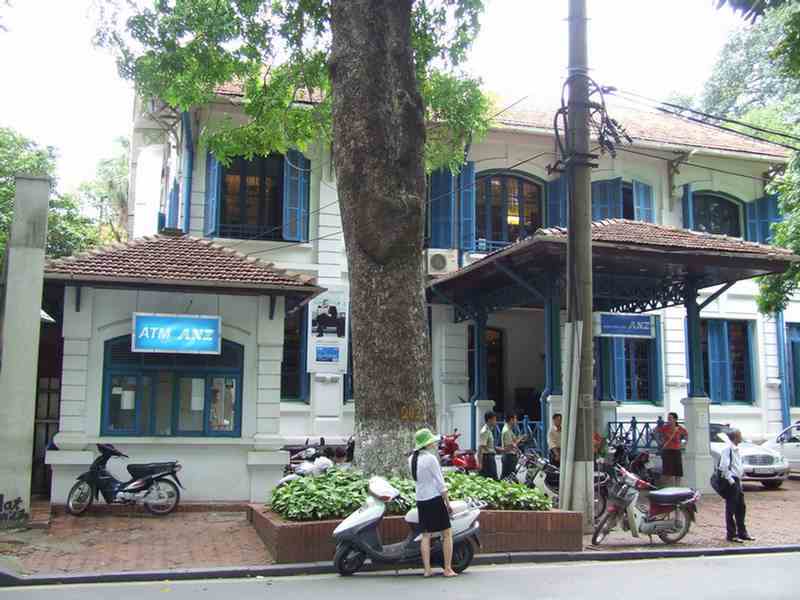
Temple of Literature - Van Mieu
It is Hanoi's most revered temple complex and Vietnam's principal Confucian sanctuary.
The size and layout was similar to those that I have seen in China.
Vietnam's first university was established here in 1076.
French bombs destroyed most of the buildings in 1947.
Most of the buildings were re-constructed as part of Hanoi's 990th birthday in 2000.
The front gate is inscribed with a request that visitors dismount from their horses before entering.
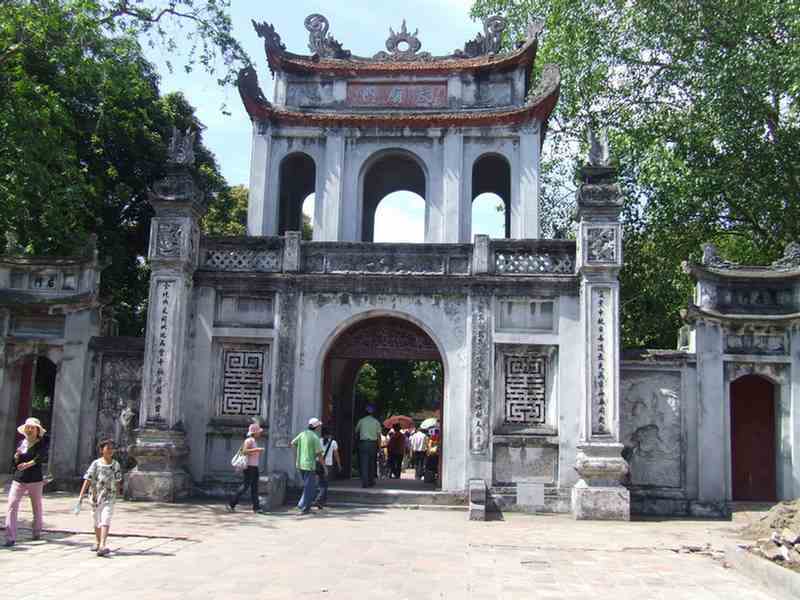
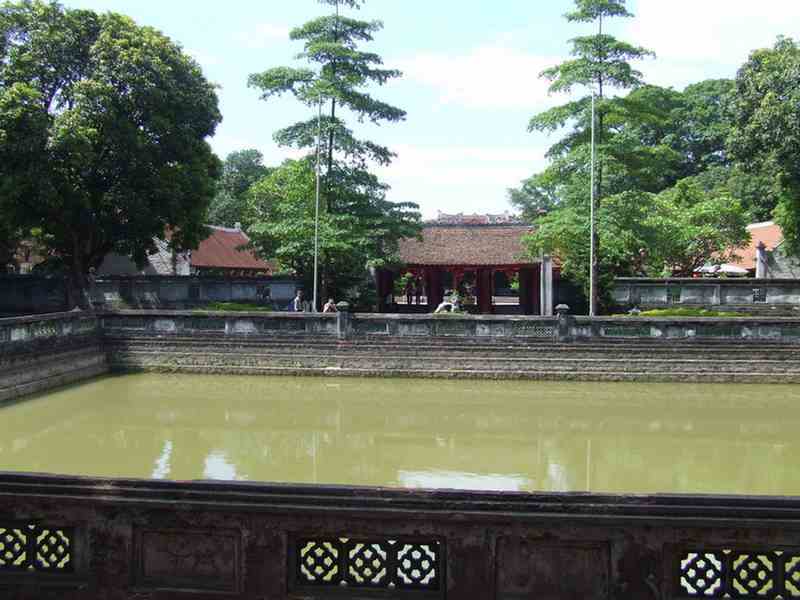
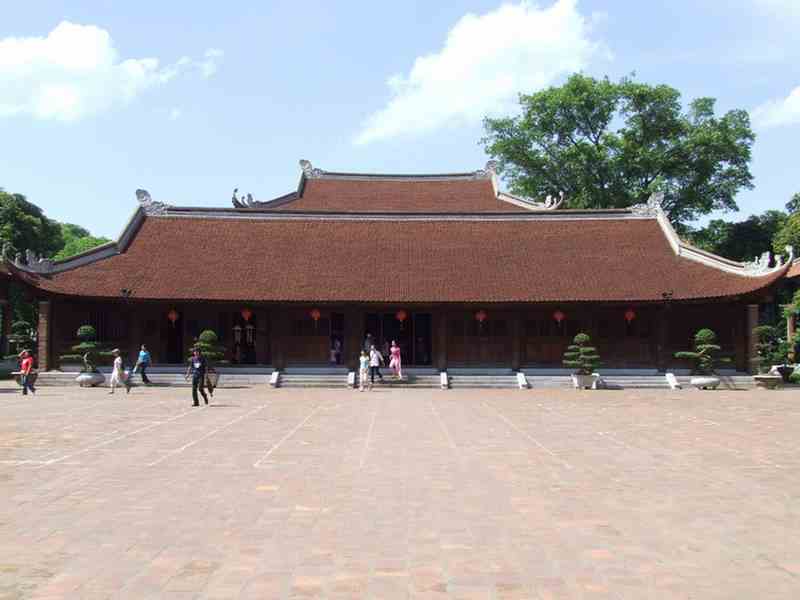
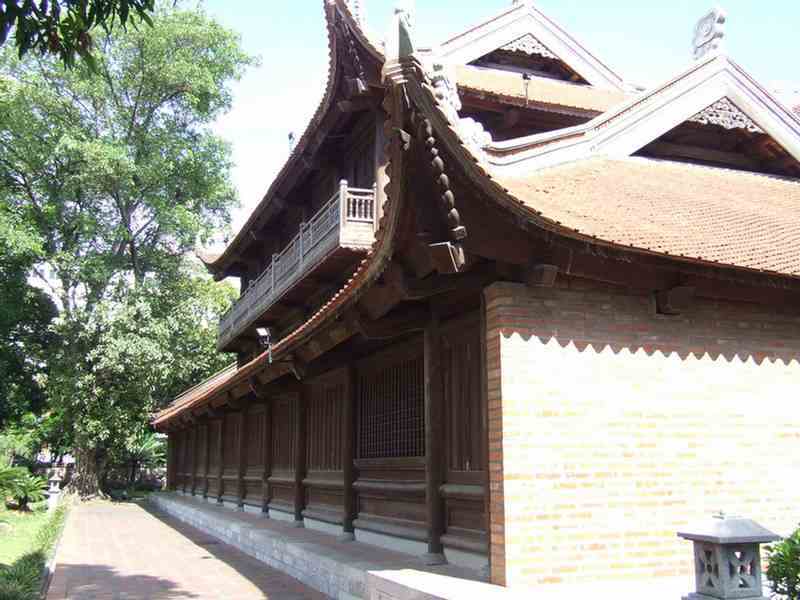
Y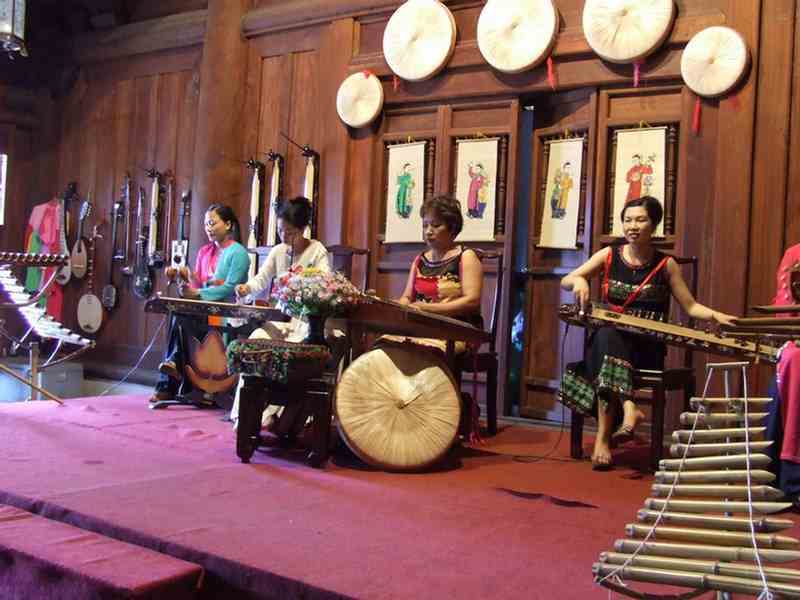
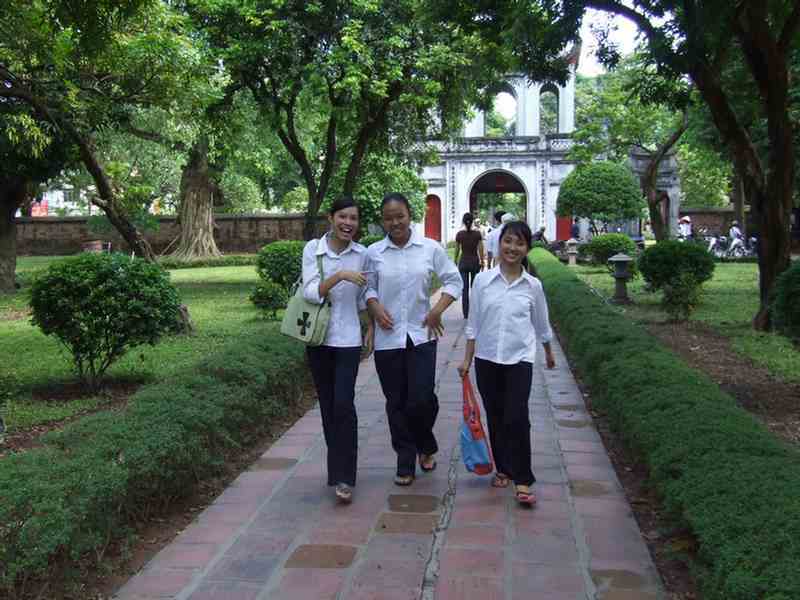
The 31 m high Hanoi Flag Pillar, a former guard tower, built in 1812 under the Nguyen Dynasty
with a captured fighter from the Vietnam war.
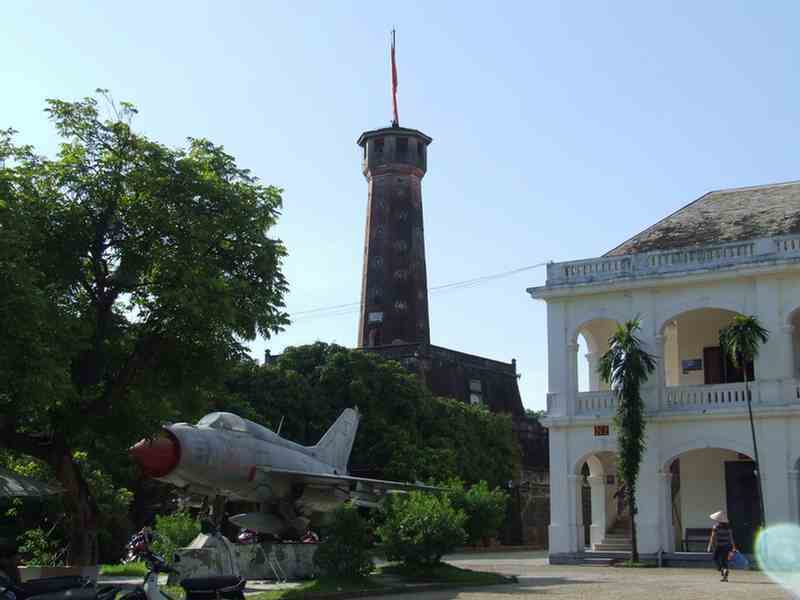

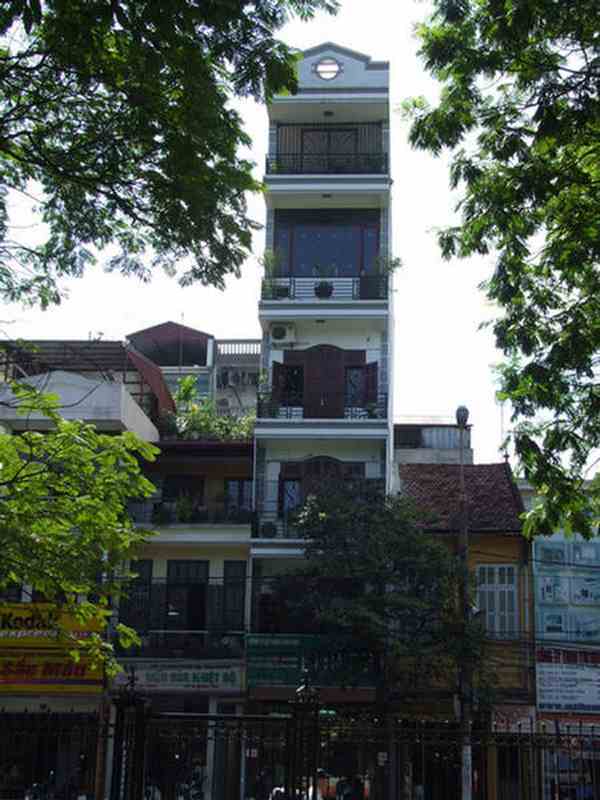
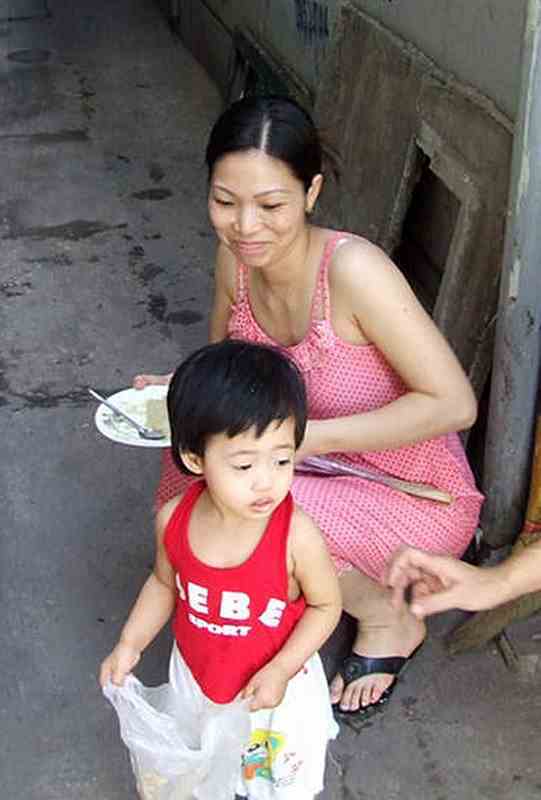
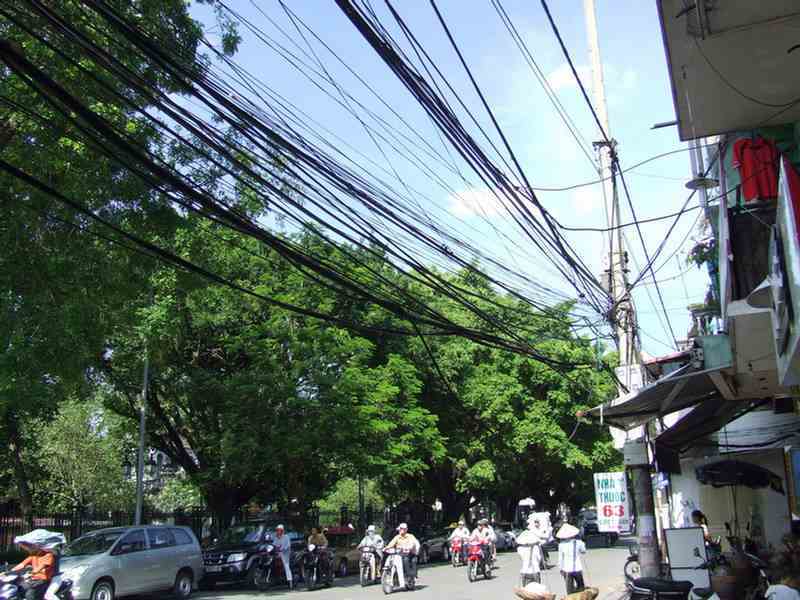
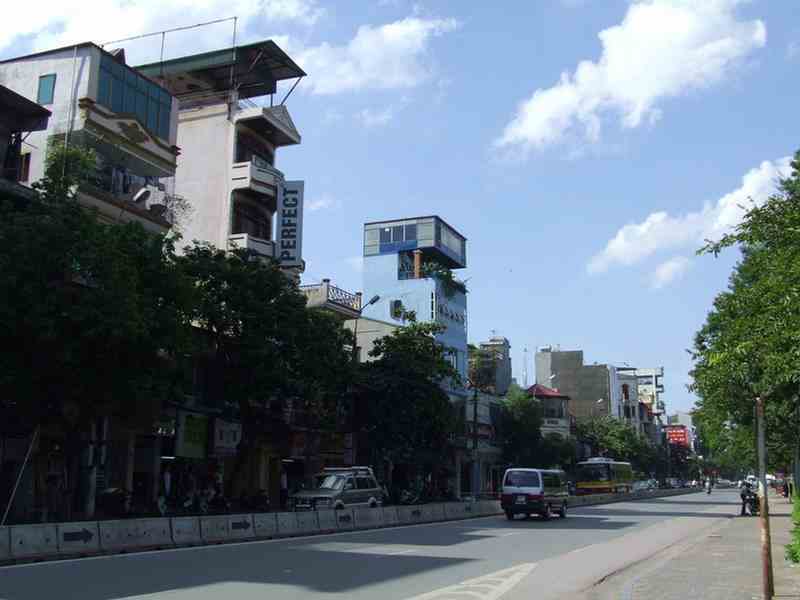
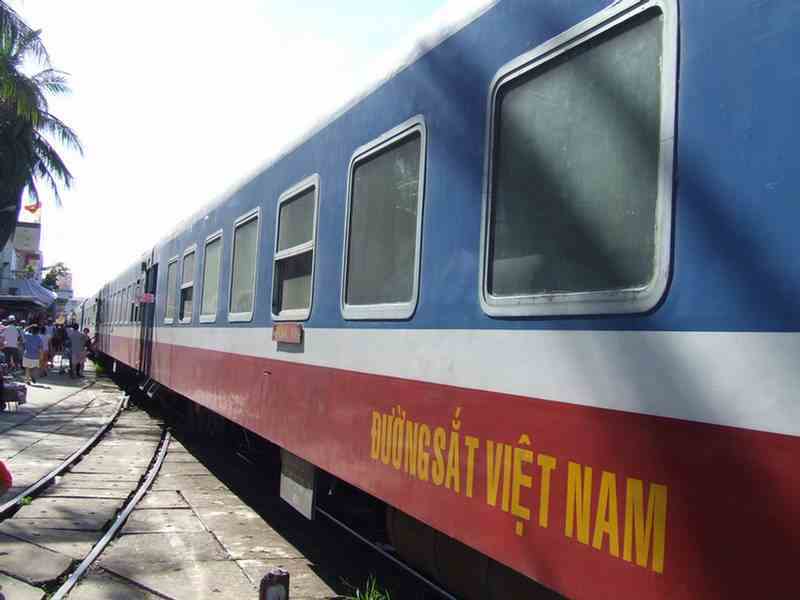
And now to Hue on the overnight train.
I had a 4-week Indochina trip in May-June 2007.
(Melbourne – Bangkok – Thailand – Laos - Vietnam - Cambodia -Thailand – Bangkok - Melbourne)
On my IntrepidTravel tour we travelled to Hanoi after a night on a boat at Halong Bay .
Originally a small settlement along the banks of the Red River, the city was founded as Thăng Long,
the capital of Imperial Vietnam, in 1010 by monarch Lý Thái Tổ.
Thăng Long would remain the most important political and cultural centre of Vietnam until 1802, when the Nguyễn dynasty,
the last imperial dynasty of Vietnam, moved the capital to Huế.
Thăng Long was renamed to Hanoi in 1831.
In 1873, Hanoi was conquered by the French, and from 1883 to 1945, the city was the capital of French Indochina.
The French colonisation left a lasting impact on the city's architecture that is visible today, as showcased through
the juxtaposition of French-styled avenues, bridges, buildings, and traditional Vietnamese architecture.
From 1940 to 1945, Hanoi was occupied by the Japanese forces.
In 1946, the National Assembly of the Democratic Republic of Vietnam (North Vietnam) designated Hanoi as the capital
of the newly-independent country, which would last during the First Indochina War (1946–1954) and the Vietnam War (1955–1975).
Following the end of the Vietnam War in 1975, Hanoi has been the capital of a reunified Vietnam since 1976.
On the way into Hanoi we stopped off at a ceramics factory where they were making vases and other pottery items.
Also there were girls embroiding Vietnamese scenes. Girls were painting very precisely on vases and dishes.


Street scenes in Hanoi.
To cross the road you just keep on walking. The motorcycles just veer around you.

Motocycles bank up in rows at traffic lights, just like cars in Australian cities.


Riding in a cyclo. You sit in front of the rider here. (In China in a rickshaw, you sit behind the rider.)



The Water Puppet Theatre
We saw a good, funny show. Puppeteers standing in the water behind screens used long rods and strings to work the puppets.
The most common subject matter usually refer to events occurring in the countryside and reflect the concerns and wishes
of farmers, who are dependent on the harvest and weather.
The scenes of this type of theatre represent rural life, rice fields, buffalo plowing the land, crops irrigation,
the rice harvest, or children jumping and playing, fish swimming, frogs, etc.



The musicians at the side played lively music and harmony.




Hao Lo Prison - Hanoi Hilton
The Hoa Lo Prison (Vietnamese: Hỏa Lò, commonly translated as "fiery furnace", actually means "stove".
The name originated from the street name "phố Hỏa Lò" due to the concentration of stores selling wood stoves and
coal-fire stoves along the street from pre-colonial time.
Built in 1896, it was a prison used by the French colonists in Vietnam for political prisoners and later
by North Vietnam for prisoners of war during the Vietnam War.
U.S. POWs endured conditions that were miserable,
and were fed food so bad that the prison was sarcastically nicknamed the "Hanoi Hilton."
There is now a Hilton Hotel in Hanoi, called the Hilton Hanoi Opera Hotel, which opened in 1999.
It was built decades after the Vietnam War was over, but Hilton carefully avoided reusing the dreaded name Hanoi Hilton.






Ho Chi Minh's Mausoleum
We walked with our local guide, Quan, to Uncle Ho's Mausoleum.
The entry queue moved well. They even had a covered way to queue under.
He was better displayed than Mao in Beijing.
A queue marshall




Ho Chi Minh's House
Adjacent to his mausoleum is the Presidential Palace.
It was formerly the French Indochina General Governor's Palace.
Ho Chi Minh never lived in it, preferring a simpler house.


The simpler house where Ho Chi Minh lived and worked from 1954-1958.


Ho Chi Minh Museum
The Ho Chi Minh Museum is near his mausolem. The whole building evokes a stylized lotus flower.
There is an excellent display of his youth, his knowledge and idea-seeking trips to France, Germany and Russia,
his struggles against the French, and the Vietnam War.



Museum of Ethnology
The museum conserves and exhibits the 54 ethnic groups of Vietnam like the Muong, Thai, Tay, Yao.
There was a display about food shortages after the Vietnam War.
Even the doctor kept pigs for food in his bathroom.


Outside there was an extensive display of village huts of the various Vietnamese tribes.

The most striking house is the 19m high Bahnar Communal House.
It was a wedge-shaped landmark.


Another striking house was the Ede Longhouse.
Over 40m long it accommodated the families, daughters and granddaughters of an extended
matrilineral family in the Central Highlands.







You can get your ears looked at on the street


Y
 Y
YY





Hoan Kiem Lake (Vietnamese: Hồ Hoàn Kiếm, meaning "Lake of the Returned Sword" or "Lake of the Restored Sword"
is a lake in the historical center of Hanoi.
Legend has it that in the mid 15th Century, heaven gave Emperor Ly Thai To (Le Loi) a magical sword that he used
to drive the Chinese out of Vietnam.
One day after the war, while out boating he came upon a golden tortoise swimming on the surface of the water.
The creature grabbed the sword and disappeared into the depths of the lake.
Since that time the lake has been known as Hoan Kiem (Lake of the restored sword) because the tortoise returned the sword
to its divine owners.
Scenes in the Water Puppet Show depicted this.



The ANZ Bank is here

Temple of Literature - Van Mieu
It is Hanoi's most revered temple complex and Vietnam's principal Confucian sanctuary.
The size and layout was similar to those that I have seen in China.
Vietnam's first university was established here in 1076.
French bombs destroyed most of the buildings in 1947.
Most of the buildings were re-constructed as part of Hanoi's 990th birthday in 2000.
The front gate is inscribed with a request that visitors dismount from their horses before entering.




Y


The 31 m high Hanoi Flag Pillar, a former guard tower, built in 1812 under the Nguyen Dynasty
with a captured fighter from the Vietnam war.







And now to Hue on the overnight train.